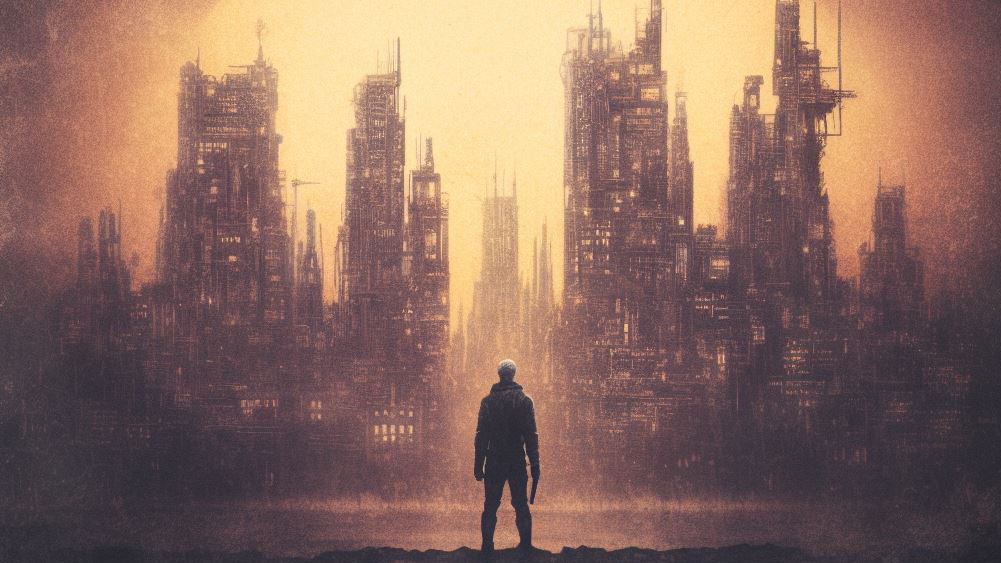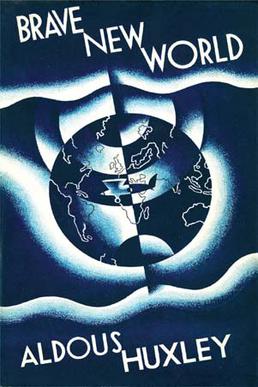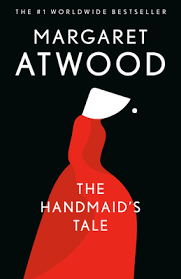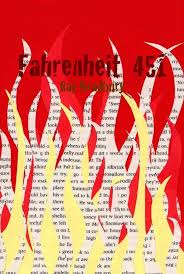Dystopian fiction has long been a compelling and thought-provoking genre in literature, offering a glimpse into possible dark futures.
In a world where technological advancements and societal shifts shape our daily lives, dystopian fiction serves as a mirror reflecting our fears, hopes, and the consequences of our actions.
This genre enables us to explore the implications of our choices and contemplate the potential dystopias that could arise from them.
Dystopian fiction is more than a collection of dark tales—it is a testament to the enduring power of storytelling as a vehicle for reflection, critique, and change.
It is a genre that transcends time and place, speaking to the very core of our human condition, resonating with our deepest fears and our most cherished hopes.
These narratives, though often dark and unsettling, ultimately offer a glimmer of hope—a reminder that the future is not predetermined, and it is within our power to shape it for the better through informed choices and collective action.
In the face of these existential challenges, dystopian fiction challenges us to confront our vulnerabilities and take meaningful steps toward building a more sustainable and just world.
- The Roots of Dystopian Fiction
- Dystopia as a Reflection of Society
- Dystopian Fiction: Catalyst for Change
- Comparative Analysis of Dystopian Fiction
- The Enduring Impact of Dystopian Literature
- Dystopian Stories in Other Media
- The Evolution of Dystopian Fiction: Navigating Current Realities and Technological Horizons
- Conclusion
The Roots of Dystopian Fiction
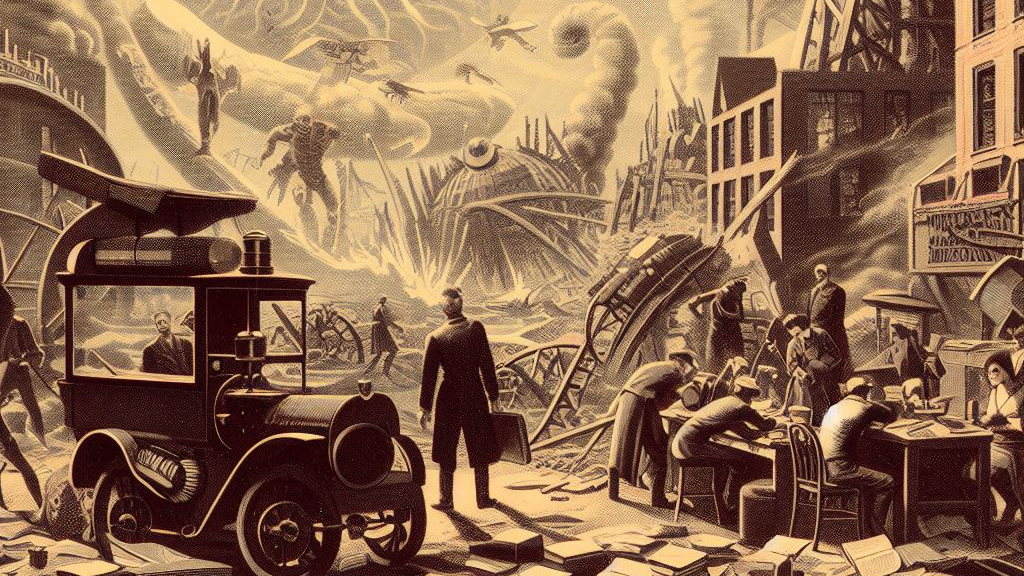
The term “dystopia” is a direct descendant of the word “utopia,” which was coined by Sir Thomas More in his 1516 work of the same name.
Utopia envisioned an ideal society, where harmony, justice, and prosperity reigned.
However, it is within the context of this utopian vision that the seeds of dystopian thought were first sown.
As More described the perfect society, he simultaneously critiqued the flaws and excesses of his own time.
This paradoxical juxtaposition of the ideal and the flawed would become a hallmark of dystopian fiction.
More’s work set the stage for the emergence of dystopian literature by prompting writers to question the very foundations of their societies.
Jonathan Swift, in his 1726 masterpiece Gulliver’s Travels, expanded upon More’s satirical approach to societal critique.
In the book’s fourth voyage to the land of the Houyhnhnms, Swift introduced a society of rational horses and irrational humans, painting a darkly satirical picture of human folly.
This satirical strand within dystopian fiction highlighted the genre’s capacity to scrutinize the human condition and the absurdities of society.
Swift’s work demonstrated that dystopian narratives could serve as powerful vehicles for social commentary, a theme that would persist throughout the genre’s history.
The 19th century ushered in an era of rapid industrialization and urbanization, and the anxieties and uncertainties accompanying these transformations found their way into literature.
One of the earliest modern dystopian works, 1872’s Erewhon by Samuel Butler, explored the potential dangers of unchecked technological progress and societal conformity.
But it was in the 20th century that dystopian fiction truly came into its own. The devastating events of World Wars, totalitarian regimes, and the threat of nuclear annihilation provided fertile ground for dystopian narratives.
George Orwell’s 1984, released in 1949 and 1932’s Aldous Huxley’s Brave New World, remain iconic examples of this period, offering chilling visions of oppressive surveillance states and dehumanizing technological societies.
The Cold War era, with its geopolitical tensions and nuclear brinkmanship, fueled further exploration of dystopian themes.
Writers like Philip K. Dick, in Do Androids Dream of Electric Sheep?, pondered the blurred lines between humans and machines, while Kurt Vonnegut, in Player Piano, examined the dehumanizing effects of automation.
As the 20th century gave way to the 21st, dystopian fiction continued to evolve.
Authors increasingly turned their attention to environmental concerns, political polarization, and the ethical dilemmas of emerging technologies.
Works like Margaret Atwood’s The Handmaid’s Tale and Cormac McCarthy’s The Road grappled with issues of reproductive rights and post-apocalyptic survival, respectively.
Dystopia as a Reflection of Society
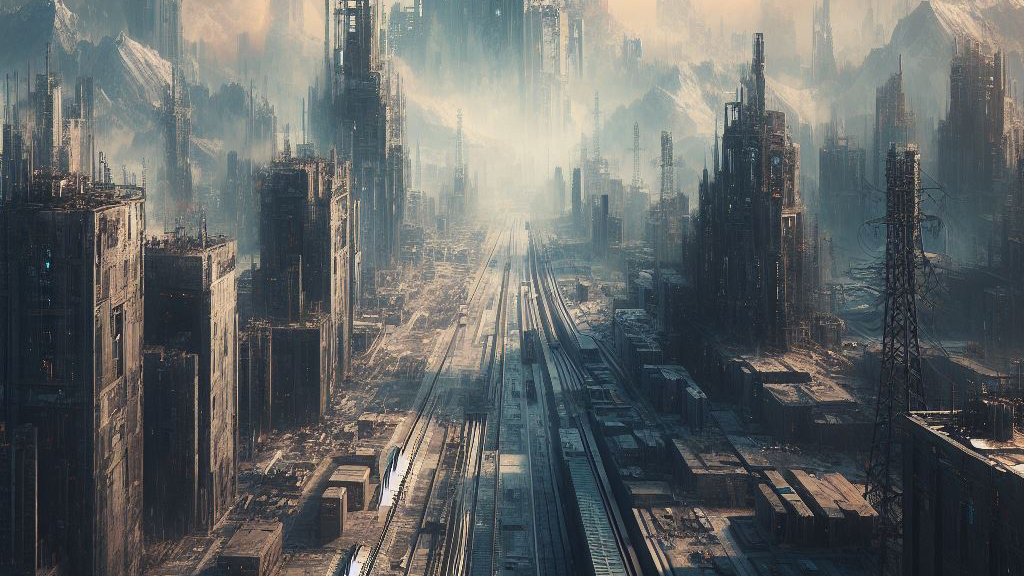
Fast forward to the present day, and the dystopian genre has evolved to reflect our contemporary fears and hopes.
Climate change, overpopulation, artificial intelligence, and genetic engineering are among the key themes explored in modern dystopian fiction.
Authors grapple with the implications of these issues and craft narratives that compel readers to consider the potential outcomes if we fail to address them.
Climate Change
Among the paramount concerns addressed in modern dystopian fiction, climate change stands at the forefront.
As the specter of rising global temperatures, extreme weather events, and ecological disasters looms large in our collective consciousness, authors have seized upon this existential threat to craft narratives that serve as stark warnings.
Works like The Water Knife and The Windup Girl both by Paolo Bacigalupi envisage worlds where climate chaos has wreaked havoc, pushing humanity to the brink of survival.
These dystopian visions compel readers to confront the harrowing consequences of inaction, deforestation, and pollution, while simultaneously urging us to take immediate and decisive action to mitigate the impending crisis.
Societal Inequality and Oppression
Societal inequality and oppression are persistent issues, and dystopian fiction continues to shed light on them.
Works like The Hunger Games by Suzanne Collins and Red Mars by Kim Stanley Robinson delve into class struggles, power imbalances, and the consequences of unchecked authority.
These narratives serve as cautionary tales, urging readers to question and challenge existing power structures.
Overpopulation
In a world where the global population continues to swell, the theme of overpopulation has become increasingly pertinent.
Dystopian authors grapple with the idea of resource scarcity, overburdened infrastructure, and the erosion of personal freedoms in overcrowded societies.
The Children of Men by P.D. James explores a world where infertility has led to societal collapse, emphasizing the fragility of the human condition when faced with dwindling resources and an ever-expanding populace.
These narratives compel readers to contemplate the importance of responsible family planning and sustainable population growth.
Artificial Intelligence
The rapid advancement of artificial intelligence has given rise to a wealth of ethical and existential questions.
Modern dystopian fiction delves into the implications of AI on our lives, privacy, and autonomy.
Works like Neuromancer by William Gibson and I, Robot by Isaac Asimov envision worlds where AI systems exert immense control over human existence, raising concerns about the consequences of ceding too much power to machines.
These narratives serve as cautionary tales, prompting readers to consider the ethical boundaries of AI development and the importance of maintaining human agency in an increasingly automated world.
Genetic Engineering
The potential for genetic engineering to reshape the very essence of humanity is a subject ripe for exploration in dystopian literature.
In Huxley’s Brave New World, the manipulation of genetics and the conditioning of individuals for societal roles are central themes, portraying a future where the boundaries of human nature have been blurred and individuality has been sacrificed in the pursuit of societal stability.
These narratives force readers to reflect on the ethical dilemmas surrounding genetic engineering and the consequences of tampering with the essence of life itself.
Technology and Loss of Humanity
The rapid advancement of technology is another major theme in contemporary dystopian fiction.
Authors envision futures where artificial intelligence, automation, and cybernetics dominate, potentially leading to a loss of humanity and personal autonomy.
Books like Neuromancer and Do Androids Dream of Electric Sheep? explore the boundaries of humanity and the ethical dilemmas posed by advancing technology.
Dystopian Fiction: Catalyst for Change
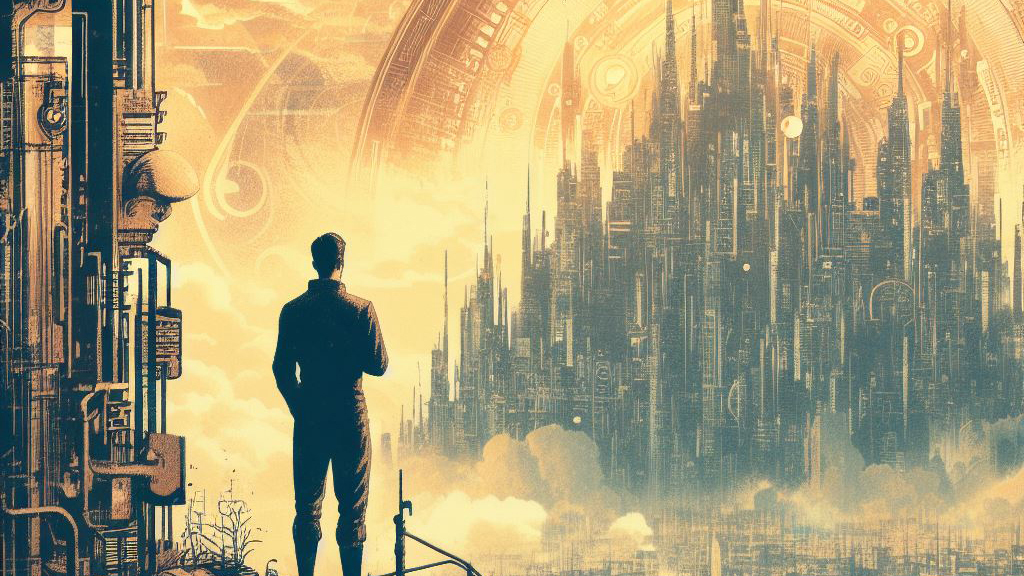
Dystopian fiction, with its bleak portrayals of nightmarish futures, has long been regarded as more than just a genre of literature.
It is a powerful force for reflection, critique, and transformation in society.
Through its imaginative and often unsettling narratives, dystopian fiction has played a vital role in shaping public discourse, catalyzing social change, and prompting individuals to reevaluate their beliefs and actions.
Challenging the Status Quo
One of the fundamental roles of dystopian fiction is to challenge the status quo.
By presenting readers with nightmarish visions of the future, it encourages them to question the current state of affairs and consider the potential consequences of inaction or complacency.
Dystopian narratives often depict oppressive governments, societal inequalities, and the erosion of personal freedoms.
These depictions serve as a call to arms, urging readers to take a critical look at their own societies and advocate for change.
Orwell’s 1984 is a classic example of dystopian fiction that challenged the status quo.
It introduced readers to the concept of “Big Brother” and a surveillance state where privacy and individuality were obliterated.
The novel inspired discussions about government surveillance, propaganda, and the importance of safeguarding civil liberties.
It prompted readers to become more vigilant about protecting their freedoms and holding those in power accountable.
Environmental Awareness
In an era marked by growing environmental concerns, dystopian fiction has become a platform for raising awareness about the consequences of environmental degradation and climate change.
These narratives vividly depict worlds ravaged by ecological disasters, resource scarcity, and the collapse of ecosystems.
By immersing readers in these dystopian landscapes, authors compel them to confront the urgent need for environmental stewardship and sustainable practices.
McCarthy’s The Road paints a grim picture of a post-apocalyptic world devastated by an unnamed catastrophe.
The novel’s desolate setting and harrowing journey of survival underscore the fragility of the natural world and the consequences of ecological neglect.
It serves as a poignant reminder of the importance of preserving our environment and mitigating the impacts of climate change.
Ethical Dilemmas in Technology
As technology continues to advance at an unprecedented pace, dystopian fiction explores the ethical dilemmas and potential pitfalls of unchecked technological innovation.
These narratives delve into themes such as artificial intelligence, surveillance technology, and genetic engineering, forcing readers to grapple with the implications of rapid technological progress.
Do Androids Dream of Electric Sheep? raises profound questions about the nature of humanity and the ethics of creating lifelike androids.
The novel challenges readers to consider the moral implications of creating intelligent beings and the consequences of treating them as disposable commodities.
It has sparked discussions about the ethical boundaries of technology and the responsibilities of creators and consumers alike.
Social Justice and Equality
Dystopian fiction often serves as a vehicle for exploring issues of social justice and equality.
These narratives depict societies plagued by discrimination, oppression, and power imbalances.
By portraying the consequences of such injustices, dystopian fiction compels readers to examine their own societies and advocate for greater equity and inclusivity.
The Handmaid’s Tale presents a dystopian world where women are subjugated and stripped of their rights.
The novel has become a symbol of feminist literature and a rallying point for discussions about gender equality, reproductive rights, and the importance of defending individual liberties.
Dystopian fiction is a genre that explores imagined societies characterized by oppressive societal control, often portraying a bleak and dehumanizing future.
These narratives serve as cautionary tales, warning against the dangers of unchecked power, societal manipulation, and the erosion of fundamental human rights.
Comparative Analysis of Dystopian Fiction
By examining the nuances within iconic dystopian literature we aim to uncover the common threads that bind these works while illuminating their unique contributions to the exploration of human nature, societal structures, and the fragility of human freedom in imagined, often troubling, futures.
These narratives depict societies marked by oppression, societal control, and the erosion of fundamental human rights, each presenting a cautionary tale warning against the dangers of unchecked power.
1984 and Brave New World
Both 1984 and Brave New World are seminal dystopian novels that envision future societies, but they portray contrasting totalitarian worlds and highlight different aspects of control and societal structure.

1984 is a grim portrayal of a totalitarian regime where the government, led by Big Brother, exercises omnipresent surveillance and control.
The society is ruled by fear, propaganda, and strict regulation of thoughts and behaviors.
The Party manipulates truth and history, employing tactics such as Newspeak to control language and restrict freedom of expression.
The protagonist, Winston Smith, rebels against this oppressive regime, which ultimately crushes individuality and enforces conformity through brutal methods.
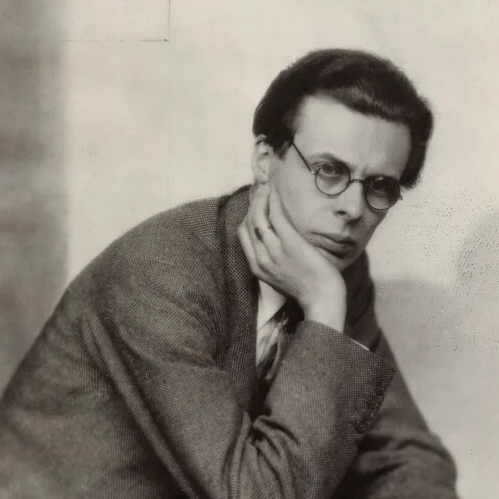
On the other hand, Brave New World presents a society that is controlled through pleasure, conditioning, and biological engineering rather than overt oppression.
Citizens are conditioned from birth to fit into specific societal roles and are kept content through a drug called Soma, which induces euphoria.
This world operates on the premise of stability, achieved by eliminating emotions like love, passion, and individual desires.
The protagonist, Bernard Marx, rebels against the superficial happiness and the lack of personal autonomy, leading to conflict within the rigid societal structure.
While both novels explore the dangers of extreme control and the loss of individual freedoms, their approaches differ.
1984 emphasizes the control of the mind through fear and manipulation, whereas Brave New World focuses on controlling society through pleasure and conditioning, effectively suppressing dissent by fulfilling desires rather than imposing fear.
Furthermore, 1984 portrays a society under perpetual war and constant surveillance, where truth is malleable, and the government’s power is derived from overt oppression.
In contrast, Brave New World presents a stable society that is superficially peaceful, where control is exerted through conditioning and the satisfaction of material desires, leading to the suppression of individuality without the need for constant surveillance or fear tactics.
While both novels present dystopian visions of future societies, 1984 emphasizes overt control and fear, whereas Brave New World highlights the dangers of a society controlled by pleasure and conditioning, ultimately leading to the loss of individuality and freedom.
The Handmaid’s Tale and Fahrenheit 451
The Handmaid’s Tale and Fahrenheit 451 by Ray Bradbury are both dystopian novels that examine oppressive societies, but they explore different aspects of control, censorship, and the consequences of totalitarian rule.

In The Handmaid’s Tale, Atwood presents a world where religious fundamentalism has taken over the government, creating a society that subjugates women’s rights and freedoms.
The protagonist, Offred, lives in a theocratic regime where women are valued only for their reproductive capabilities.
The government enforces control over women’s bodies, and fertile women are forced to bear children for the ruling class.
The narrative exposes the brutal suppression of individuality and the subjugation of women through the systematic removal of their rights.
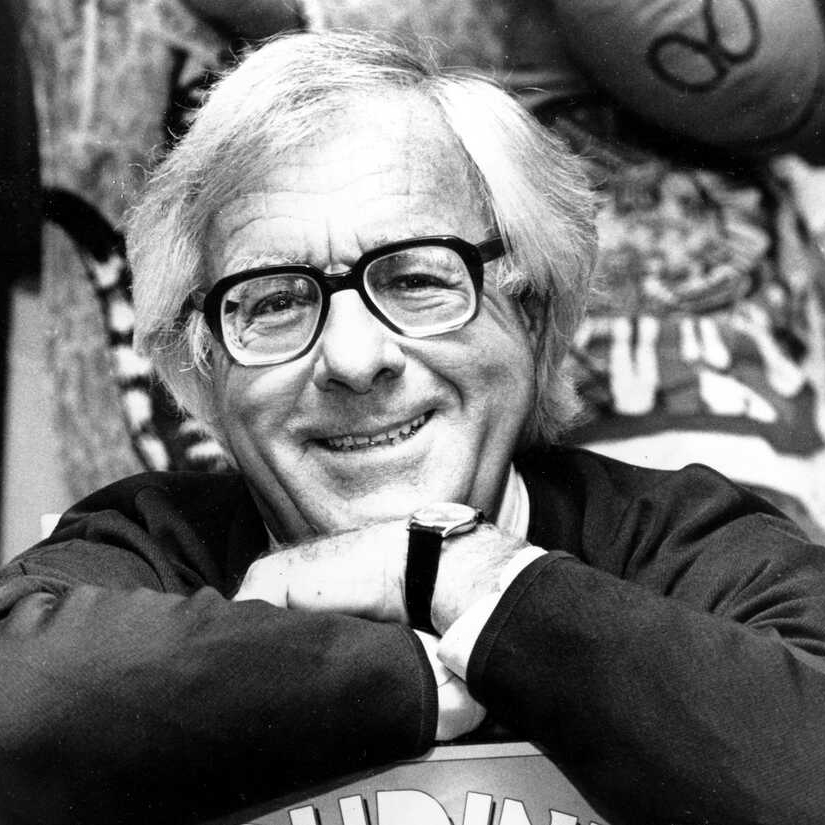
On the other hand, in Fahrenheit 451, Bradbury portrays a society where books are banned, and intellectualism is suppressed.
The protagonist, Guy Montag, is a fireman whose job is to burn books, considered illegal in this dystopian world.
The government controls the population by limiting access to knowledge and promoting mindless entertainment, leading to a society where critical thinking is discouraged.
The novel explores the consequences of a society that prioritizes immediate gratification and entertainment over intellectual growth and critical thinking.
While both novels examine control and censorship, The Handmaid’s Tale focuses on the subjugation of a specific group (women) in a totalitarian regime where religious ideology is exploited for political control.
Contrastingly, Fahrenheit 451 concentrates on the broader suppression of knowledge and intellectual freedom, revealing the consequences of a society where books and intellectual pursuits are forbidden.
The Handmaid’s Tale delves deeply into the personal experiences of one woman trapped in a repressive society, exploring the emotional and psychological effects of oppression on an individual.
In contrast, Fahrenheit 451 explores the broader societal implications of a world devoid of intellectual freedom, portraying the consequences on humanity as a whole, and the dangers of a society devoid of critical thinking and reflection.
While both novels explore the themes of control and suppression, The Handmaid’s Tale emphasizes the subjugation of women in a theocratic regime, while Fahrenheit 451 focuses on the broader implications of a society devoid of intellectual freedom and the consequences of a culture that devalues books and critical thinking.
The Hunger Games and The Giver
Both The Hunger Games trilogy and The Giver are young adult dystopian novels that examine societies controlled by authoritarian rule and restrictions.
While they share common themes, they present contrasting worlds and explore different facets of control and societal structure.

In The Hunger Games, the narrative is set in a dystopian future where the ruling Capitol maintains control over twelve districts through an annual televised event known as the Hunger Games.
These games involve children fighting to the death as a form of entertainment and a method of asserting the Capitol’s dominance.
The trilogy focuses on the protagonist, Katniss Everdeen, who challenges the oppressive regime and becomes a symbol of rebellion against the Capitol’s tyranny.
The series addresses themes of inequality, survival, and the power of individual resistance against an authoritarian regime.

On the other hand, The Giver presents a society where emotions, memories, and individual choices are suppressed in the pursuit of stability and control.
The protagonist, Jonas, is selected as the Receiver of Memory and learns about the true nature of the seemingly utopian community.
The book explores the consequences of suppressing emotions and the value of individual experiences, memories, and choices in a controlled society.
While The Hunger Games focuses on overt control and rebellion, The Giver delves into the dangers of a society that suppresses emotions and memories to achieve a false sense of harmony.
Both novels examine the consequences of a controlled society, but The Hunger Games emphasizes the rebellion against a government that uses violent spectacles for control, while The Giver explores the dangers of a society that eradicates emotions and individual experiences for the sake of stability.
Furthermore, The Hunger Games showcases the power of individual defiance and revolution, while The Giver centers on the value of individuality and emotions in a world seeking to eradicate them for the perceived greater good.
While both novels address the themes of control and rebellion, The Hunger Games focuses on a society driven by oppressive entertainment and individual defiance, whereas The Giver explores a seemingly harmonious world that suppresses emotions and individual experiences, raising questions about the true cost of such control over humanity.
Dystopian Fiction as Society’s Mirror
While these dystopian works vary in their portrayals of oppressive societies and the means of control, they collectively serve as mirrors to reflect on the dangers of unchecked power, societal manipulation, and the erosion of human freedoms.
Each narrative offers a unique perspective on the human condition and the potential consequences of societal extremes.
The Enduring Impact of Dystopian Literature
Dystopian literature has long served as a mirror reflecting society’s deepest fears, provoking critical thought and igniting discussions about the potential consequences of unchecked power and societal control.
Several major works in this genre, upon their publication, not only captured the imagination of readers but also left an indelible mark on society, influencing cultural conversations and leaving a lasting legacy.
1984
Upon its release, 1984 sparked both awe and apprehension.
Orwell’s depiction of a totalitarian regime, employing surveillance, thought control, and the manipulation of truth, struck a chord in the post-World War II era.
Readers and critics alike were alarmed by the novel’s bleak portrayal of a future marked by government oppression.
The themes of surveillance, propaganda, and the erosion of truth resonated deeply, especially during the Cold War era.
The book’s impact has been profound and enduring.
Phrases like “Big Brother is watching” and concepts such as “Newspeak” have entered the cultural lexicon.
The novel remains a touchstone for discussions on government overreach, surveillance, and the manipulation of information, continuing to warn against the dangers of authoritarianism.
Brave New World
Brave New World was received with mixed reviews upon its release.
Some critics found its vision of a future society, governed by pleasure, conditioning, and the suppression of individuality, as too dystopian and lacking hope.
Yet, the book gained traction for its exploration of a world controlled through hedonism and conformity.
Over time, its influence has grown significantly.
Huxley’s portrayal of a society inundated with distractions and superficial pleasures has striking parallels with modern consumer culture.
The novel remains a pivotal work, addressing issues related to mass production, the dehumanization of society, and the consequences of sacrificing individuality for stability.
The Handmaid’s Tale
The Handmaid’s Tale was met with critical acclaim for its chilling depiction of a theocratic dystopia where women’s rights were stripped away.
The novel reverberated with readers, particularly in the context of ongoing debates about women’s rights and fundamentalist movements.
The book’s legacy continues to be felt in ongoing discussions about reproductive rights, gender equality, and the dangers of religious fundamentalism.
Its adaptation into a highly successful television series further expanded its influence, revitalizing conversations about women’s autonomy and the fragility of human rights in times of societal upheaval.
Fahrenheit 451
Fahrenheit 451 received a mixed reception upon publication.
While some praised its cautionary tale about a society that burns books to suppress knowledge and independent thought, others found it overly pessimistic.
Nonetheless, the novel’s significance has endured.
It remains a cornerstone in discussions about censorship, the freedom of expression, and the impact of technology on society.
As the world becomes increasingly digitized, Bradbury’s warning about the dangers of a society that forsakes critical thinking and intellectual curiosity is more relevant than ever.
Legacy and Lasting Impact:
Collectively, these dystopian works have left their mark on literature and society.
They have served as cautionary tales, prompting readers to contemplate the consequences of unchecked authority, social control, and the erosion of fundamental human rights.
Their enduring legacies lie in their ability to provoke ongoing discourse about issues such as government surveillance, censorship, reproductive rights, individual autonomy, and the power of information.
These works continue to resonate with audiences, reminding us of the importance of vigilance and the preservation of our essential liberties in an ever-changing world.
As the societal landscape evolves, the warnings and insights offered by these dystopian masterpieces remain as relevant and powerful as they were at the time of their publication.
Dystopian Stories in Other Media
Dystopian fiction, with its haunting portrayals of troubled and often nightmarish futures, has become a compelling and thought-provoking genre across various forms of entertainment.
From the eerie landscapes of video games to the immersive storytelling in television shows and the captivating visuals of movies, dystopian narratives have flourished, offering audiences a chilling glimpse into imagined worlds fraught with societal collapse, oppressive regimes, and the struggle for survival.
Exploring Iconic Dystopian Films
Dystopian films offer audiences a glimpse into bleak, imagined futures, often reflecting societal fears, oppressive regimes, and the consequences of unchecked power.
These movies captivate audiences through vivid visuals, compelling narratives, and thought-provoking themes.
Blade Runner (1982)
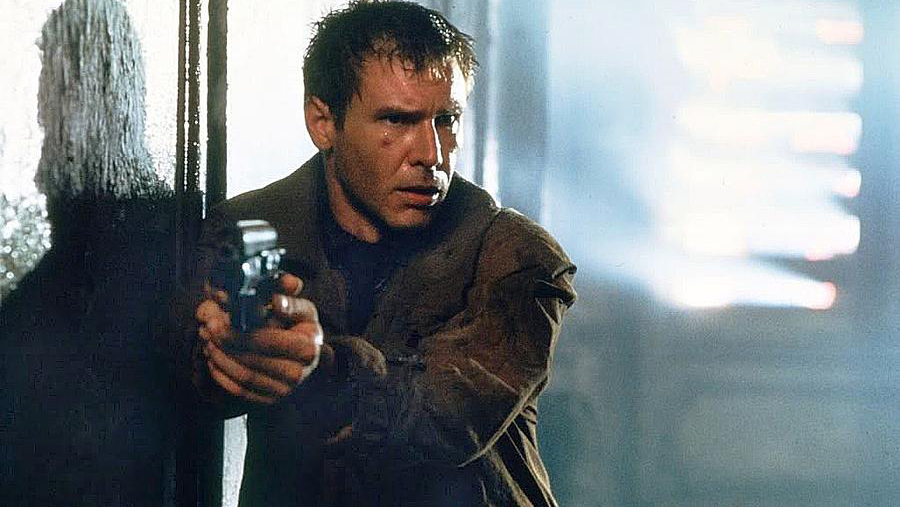
In Ridley Scott’s visionary masterpiece, the dystopian landscape of future Los Angeles serves as a haunting backdrop to a narrative that delves into the complexities of human nature and artificial intelligence.
As the replicants rebel against their preordained roles, the film prompts viewers to reflect on the very essence of what it means to be human.
The portrayal of these synthetic beings challenges conventional notions of identity, blurring the lines between humanity and machinery.
The replicants, created to serve specific purposes, grapple with their own moral dilemmas, questioning the ethical implications of their existence and the actions they undertake in their pursuit of autonomy.
The narrative unfolds as a moral maze, forcing both characters and audience alike to confront the consequences of technological advancements that bring about sentient beings capable of emotions, desires, and moral agency.
At its core, Blade Runner serves as a cautionary tale, a reflection on the potential ramifications of unrestrained technological progress.
The film compels us to ponder not only the ethical considerations surrounding the creation of artificial life but also the moral responsibility that comes with pushing the boundaries of what it means to play the role of a creator.
The Matrix (1999)
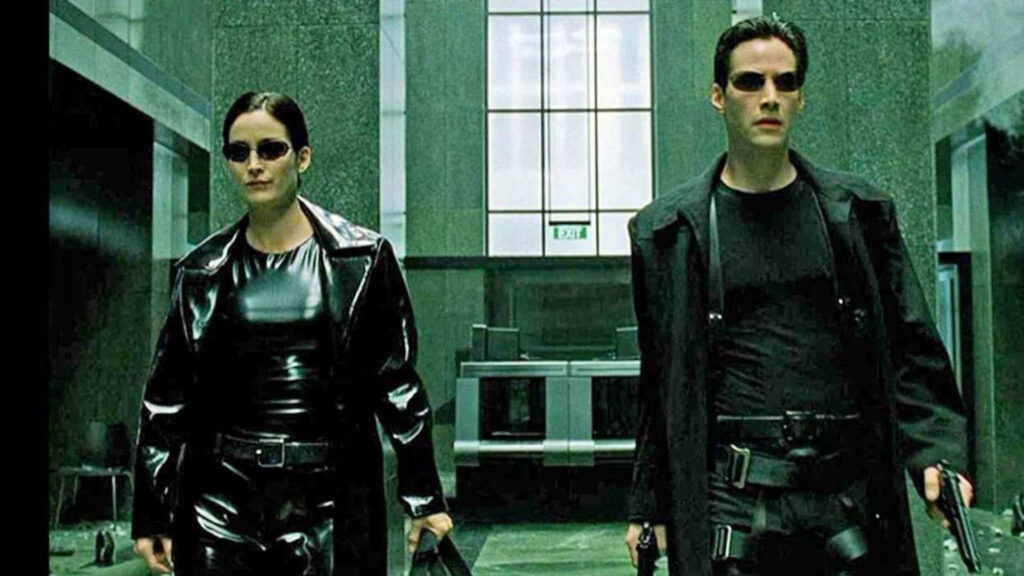
The Wachowskis’ groundbreaking film presents a mesmerizing journey through the rabbit hole of reality, challenging the very fabric of our perception.
At the heart of the narrative is a hacker’s awakening to the unsettling truth that the world as humans know it is a meticulously crafted illusion, orchestrated by sentient machines to subdue the masses.
This revelation serves as the catalyst for a riveting exploration of reality itself, questioning the nature of existence, consciousness, and the profound implications of living in a simulated reality.
As the protagonist grapples with the newfound awareness of the simulated world, the film unfolds into a philosophical odyssey that delves into the concept of choice.
The characters navigate a complex interplay between fate and free will, raising profound questions about the authenticity of individual decisions within a preordained construct.
The Wachowskis weave a narrative that challenges viewers to contemplate the essence of agency in a world where choices may be as illusory as the reality they inhabit.
The Matrix transcends its genre boundaries, evolving into a cultural touchstone that resonates far beyond the realm of science fiction.
Its exploration of reality, choice, and the consequences of technological advancement reverberates through contemporary discourse on the ethical dimensions of emerging technologies.
The film’s influence extends into popular culture, where its iconic imagery and thought-provoking themes have left their mark, inviting audiences to question the nature of their own reality and the profound implications of the ever-advancing relationship between humanity and technology.
Children of Men (2006)
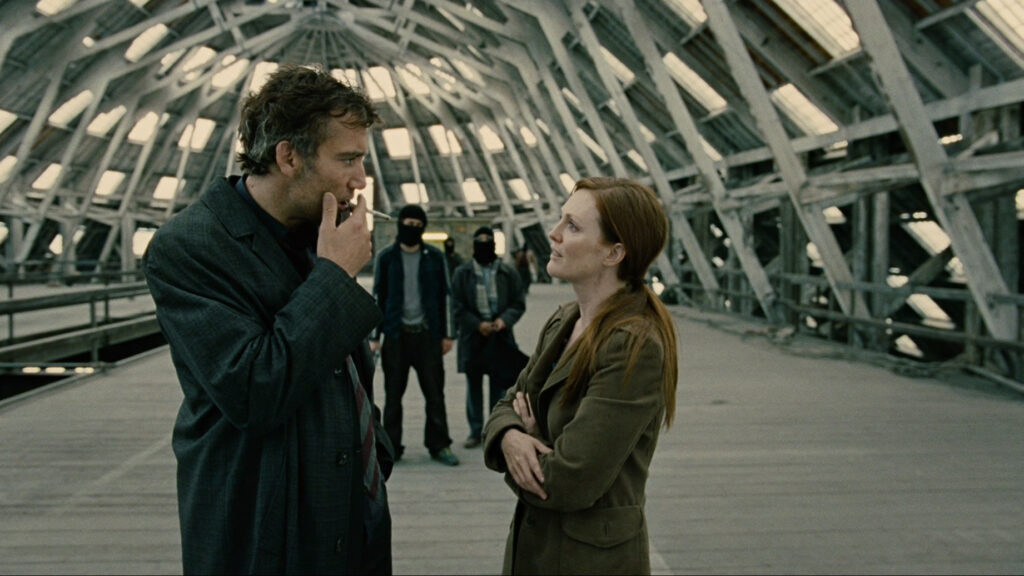
Alfonso Cuarón’s film paints a stark and harrowing vision of a world on the brink of collapse in the face of global infertility.
Set against the backdrop of a dystopian future, the narrative unfolds with an impending sense of doom as humanity grapples with its own impending extinction.
The film becomes a poignant exploration of the fragility of life and the profound consequences of a society unable to sustain itself due to the loss of reproductive capabilities.
Cuarón crafts a hauntingly atmospheric world, where the remnants of civilization serve as a chilling reminder of what humanity stands to lose.
At the center of this dystopian drama is a man burdened with the responsibility of safeguarding a pregnant woman, a glimmer of hope in a world ravaged by despair.
The film delves into the intricacies of human relationships and the lengths to which individuals are willing to go to ensure the survival of the species.
Against the backdrop of a crumbling society, themes of hope and despair intertwine, creating a visceral and emotionally charged narrative that forces audiences to confront the dire consequences of a world teetering on the brink.
The value of new life takes on a profound significance in this desolate landscape, serving as a catalyst for introspection on the inherent resilience of the human spirit even in the face of seemingly insurmountable odds.
Cuarón’s film stands as a poignant meditation on the fragility of existence, the tenacity of hope, and the enduring power of life amid the shadows of impending extinction.
Mad Max: Fury Road (2015)
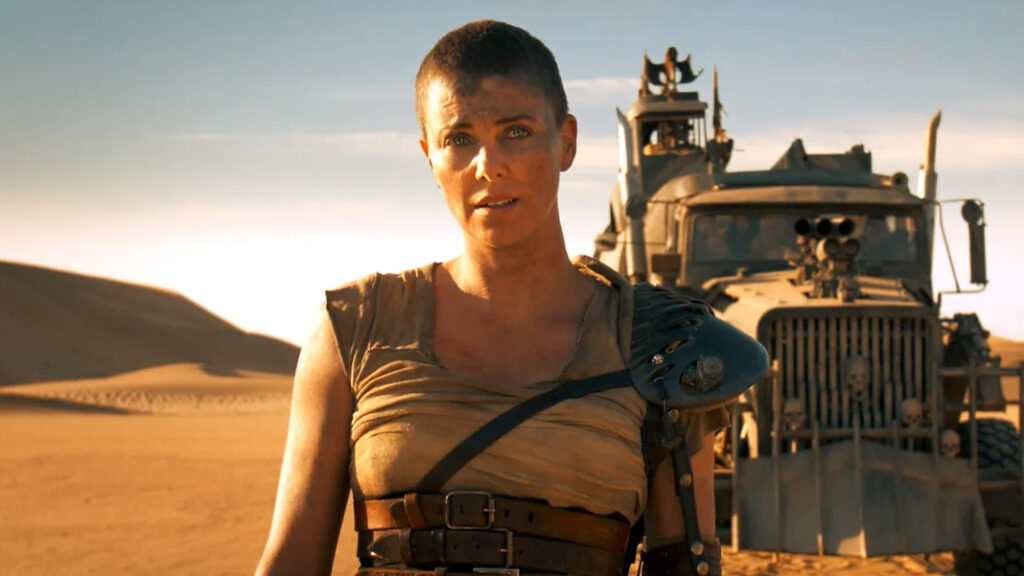
George Miller’s adrenaline-fueled masterpiece thrusts audiences into a desolate post-apocalyptic world where the remnants of civilization are overshadowed by scarcity, chaos, and the ruthless grip of tyranny.
In this high-octane landscape, Miller crafts a narrative that unfolds like a relentless chase, a thrilling ballet of vehicular mayhem against a backdrop of arid desolation.
As the scarcity of resources becomes the catalyst for societal collapse, the film emerges as a visceral exploration of the brutal realities of survival and the lengths to which individuals are compelled to go in their pursuit of freedom.
At the heart of the chaos is Furiosa and Max, reluctant partners in a rebellion against a despotic ruler who hoards the scarce resources with an iron fist.
The characters become avatars of resistance, their journey a symbolic quest for redemption and a testament to the indomitable resilience of the human spirit in the face of oppression.
Miller masterfully weaves themes of survival and redemption into the fabric of the film, creating an action-packed narrative that transcends the typical conventions of the genre.
In this gritty and unforgiving world, the roar of engines becomes a symphony of defiance, echoing the enduring human instinct to fight against tyranny and forge a path toward a better, more liberated future.
Snowpiercer (2013)

In Bong Joon-ho‘s thought-provoking film, the setting is a post-apocalyptic world where the last vestiges of humanity cling to survival aboard a perpetually moving train, hurtling through an icy, desolate landscape.
Snowpiercer transforms the train into a confined microcosm that mirrors the broader spectrum of societal complexities.
The train’s carriages become a symbol of social stratification, dividing its inhabitants into distinct classes that reflect the stark realities of inequality and oppression.
As the story unfolds within the claustrophobic confines of the train, it evolves into a riveting exploration of class struggle and the consequences of unchecked social disparity.
Bong Joon-ho skillfully navigates the intricacies of the train’s social structure, using it as a canvas to depict the struggles of those relegated to the lower classes.
The film becomes a powerful commentary on the systemic injustices that arise when power and resources are concentrated in the hands of a privileged few, while the majority grapple with the harsh consequences of their subjugation.
As the narrative hurtles forward, the characters within Snowpiercer embark on a perilous journey, not only physically traversing the length of the train but also metaphorically challenging the oppressive systems that govern their lives.
The film invites viewers to reflect on the broader implications of societal divisions, urging contemplation on the enduring consequences of inequality and the collective human pursuit of justice, even in the most confined and inhospitable environments.
Bong Joon-ho’s Snowpiercer stands as a stark and compelling testament to the enduring relevance of examining societal structures and the indomitable human spirit’s capacity to resist oppression and strive for a more equitable world.
Metropolis (1927)
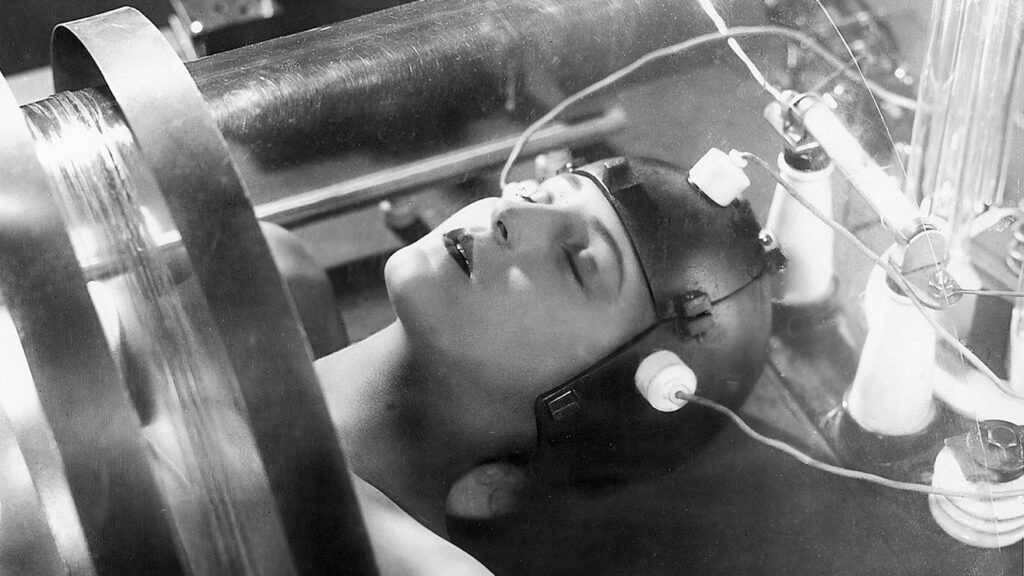
Fritz Lang’s groundbreaking silent film stands as a pioneer in the dystopian genre, a cinematic masterpiece that laid the foundation for exploring the dark undercurrents of futuristic societies.
Metropolis is a visual symphony that unfolds in a cityscape divided starkly between the opulence of the wealthy elite and the oppression of the working class.
Lang’s visionary direction and innovative use of special effects for the time create a hauntingly evocative portrayal of a society teetering on the precipice of its own contradictions.
Metropolis delves deep into the fissures of class struggle, offering a stark commentary on the societal consequences of unchecked industrialization and the widening gap between the privileged few and the oppressed masses.
The film’s narrative intricately weaves together the lives of the elite ruling class and the downtrodden workers, creating a vivid tapestry of social disparity and discord.
As towering skyscrapers and sprawling machinery dominate the landscape, Metropolis becomes a cautionary tale, foreshadowing the potential dehumanization wrought by rapid technological advancement and the callous neglect of those relegated to the margins.
Beyond its cinematic innovation, Lang’s Metropolis stands as a timeless exploration of themes that remain resonant to this day.
Its commentary on class struggle, the dehumanizing effects of industrialization, and the societal implications of stark inequality contribute to its enduring relevance, solidifying its place as an influential and thought-provoking work in the annals of cinematic history.
Iconic Dystopian Video Games
Dystopian video games offer players immersive experiences in worlds marked by societal collapse, oppressive governments, and the struggle for survival.
These games provide interactive storytelling, allowing players to explore and navigate through troubling and often thought-provoking landscapes. Here are several iconic examples of dystopian video games that have left a significant impact on gaming and popular culture:
BioShock Series (2007 – 2013)
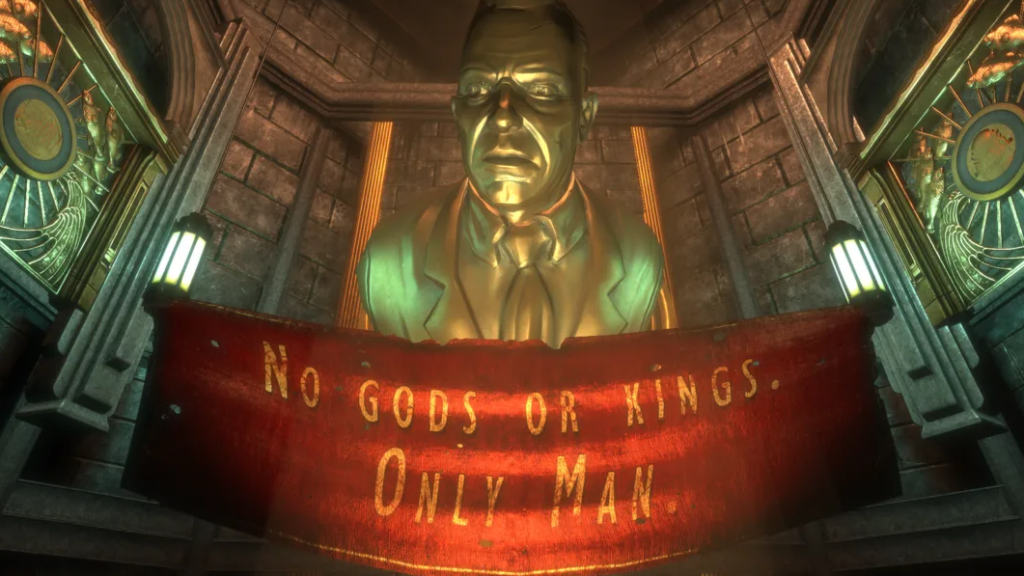
The BioShock games, set in the submerged and decaying city of Rapture, stands as a compelling exploration of the perils that accompany unbridled scientific ambition.
The underwater metropolis, envisioned by the game’s creators, becomes a haunting backdrop to a narrative that unfurls the consequences of playing god with science.
Rapture, once conceived as a utopia founded on radical individualism and unrestricted scientific progress, descends into chaos and ruin, offering players a front-row seat to the aftermath of unchecked ambition.
Within the submerged corridors of Rapture, BioShock delves into themes of societal collapse, morality, and the repercussions of extreme ideologies.
The game’s narrative unfolds against the backdrop of a retro-futuristic dystopia, blending elements of the past with a speculative vision of the future.
As players navigate the submerged city, they are confronted with the moral fallout of the inhabitants’ relentless pursuit of progress.
The choices players make throughout the game shape the course of the narrative, introducing an interactive layer that forces them to grapple with complex ethical dilemmas, mirroring the consequences of the extreme ideologies that led to Rapture’s downfall.
BioShock’s genius lies not only in its captivating gameplay mechanics but also in its ability to weave a thought-provoking narrative within the fabric of a dystopian world.
As players navigate the decaying remnants of Rapture, the games invite reflection on the real-world implications of unbridled scientific ambition and the moral quandaries that accompany technological progress.
In doing so, the BioShock series stands as an exemplary fusion of immersive storytelling and interactive gameplay, offering players an unforgettable journey into the depths of human ambition and its profound societal consequences.
Deus Ex Series (2000 – present)
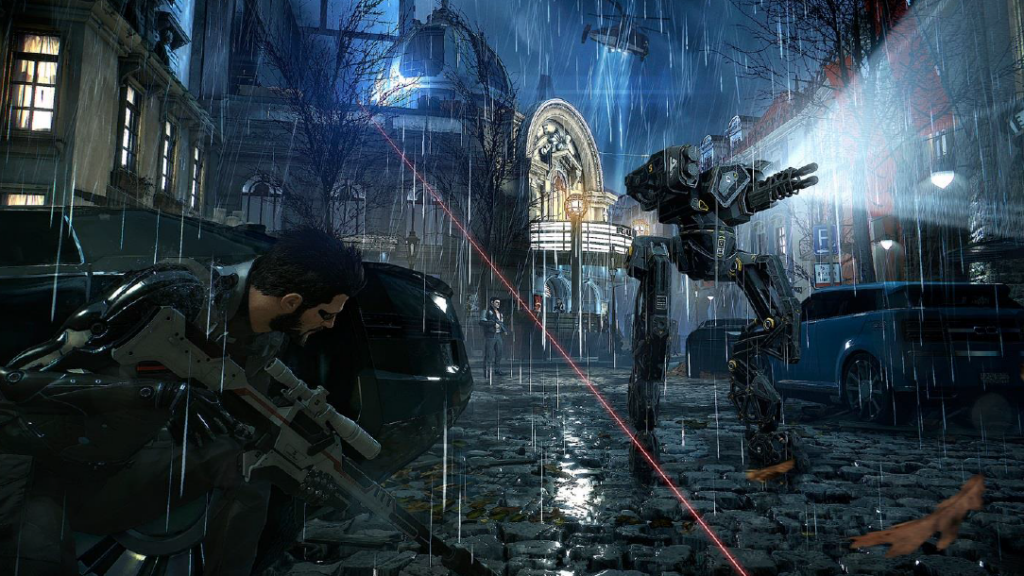
The Deus Ex game series immerses players in a cyberpunk dystopia, where the fusion of technology and societal structures gives rise to a world rife with intrigue, government conspiracies, and deep societal divides.
Set against the backdrop of a future Earth grappling with the consequences of technological augmentation, the games present a visually striking and thematically rich exploration of a world on the brink.
Augmentation technologies, once promising a utopian future, become a source of contention, amplifying the chasm between those enhanced with cutting-edge cybernetics and those left behind in the shadows of societal neglect.
As players navigate this complex and morally ambiguous landscape, they find themselves confronted with a myriad of choices that shape the narrative and influence the game world.
The Deus Ex series excels in presenting players with moral dilemmas, forcing them to weigh the consequences of their actions in a world veering toward chaos.
The choices players make not only impact the trajectory of the story but also reflect the larger societal implications of their decisions, mirroring the intricate interplay between individual agency and the broader forces shaping the cyberpunk dystopia.
In doing so, Deus Ex invites players to explore the intricate web of power, conspiracy, and societal unrest that defines the genre while underscoring the fragility of a future built upon the fusion of humanity and technology.
The Last of Us (2013) and The Last of Us Part II (2020)
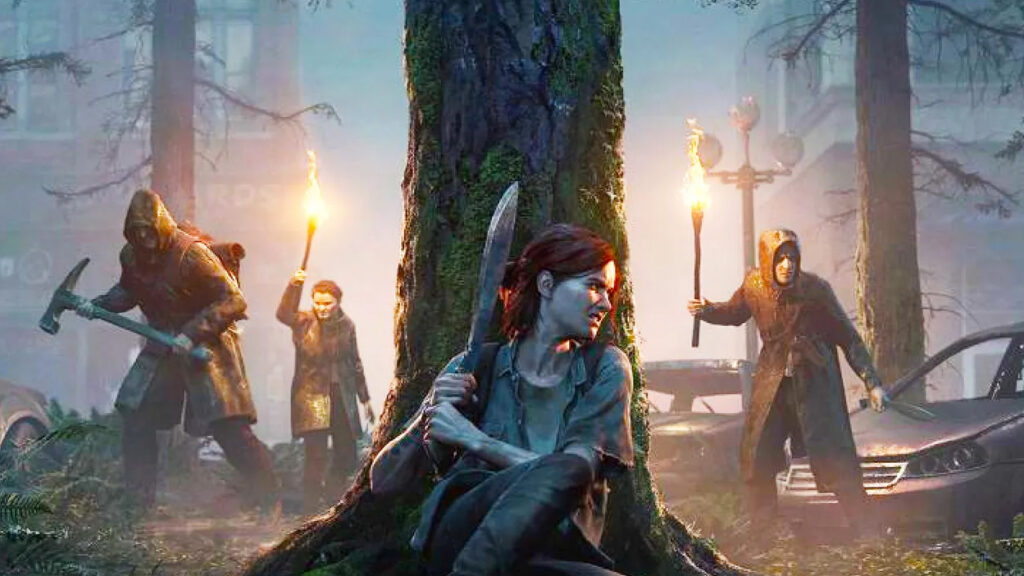
The Last of Us and its sequel, The Last of Us Part II, stand as illustrations of dystopian video game storytelling, each presenting a gripping narrative set against the backdrop of a post-apocalyptic world.
In these games, developed by Naughty Dog, players traverse landscapes ravaged by a deadly fungal infection that has decimated humanity, leading to a society on the brink of collapse.
The dystopian setting serves as a crucible for intense character development and exploration of moral ambiguity, contributing to an emotionally charged and thought-provoking gameplay experience.
The first installment introduces players to Joel and Ellie, navigating a world where survival demands not only combat skills but also strategic decision-making in the face of scarce resources and moral quandaries.
The Last of Us adeptly captures the desolation and desperation of a world undone by a pandemic, emphasizing the fragility of human relationships amid the ruins.
The sequel expands on this foundation delving even deeper into the consequences of individual actions within a fractured society.
Both games present a nuanced portrayal of the human condition, exploring themes of loss, resilience, and the ethical challenges inherent in a world where survival often comes at the expense of one’s humanity.
Beyond their engaging narratives, these games excel in environmental storytelling and character-driven gameplay, immersing players in the visceral and hauntingly beautiful landscapes of a dystopian America.
The Last of Us series stands as a testament to the power of video games as a medium for storytelling, using the interactive nature of gaming to immerse players in the emotional and ethical complexities of a world grappling with its own collapse.
Through their masterful combination of narrative depth, character development, and atmospheric design, The Last of Us and its sequel set a high standard for dystopian storytelling in the realm of video games.
Horizon Zero Dawn (2017)

In the video game Horizon Zero Dawn, players are transported to a hauntingly beautiful yet perilous future where the remnants of civilization lay in ruins, and nature has reclaimed its dominance.
At the heart of the narrative is Aloy, a skilled and resourceful young hunter, whose journey unfolds as an epic quest to unravel the mysteries of a world now dominated by robotic creatures.
These mechanized beasts, remnants of a bygone era of technological marvels, roam the landscape, adding a layer of both awe and danger to the post-apocalyptic setting.
Horizon Zero Dawn stands out not only for its visually stunning open-world design but also for its exploration of profound thematic elements.
The game delves into the consequences of environmental collapse, showcasing a world where humanity’s technological hubris has led to the rise of robotic creatures that now roam unchecked.
Aloy’s journey becomes a symbolic exploration of the delicate balance between nature and technology, raising questions about the ethical implications of unchecked scientific progress.
Amidst the societal ruins, the narrative unfolds as a quest for knowledge, with Aloy seeking to understand the mysteries of her world and the events that led to its downfall.
As players guide Aloy through the lush and dangerous landscapes of Horizon Zero Dawn, they become active participants in a narrative that seamlessly weaves together elements of environmentalism, technology, and the indomitable human spirit’s quest for understanding.
The game’s compelling storyline invites players to reflect on the implications of humanity’s impact on the natural world and the potential consequences of unrestrained technological evolution.
Horizon Zero Dawn stands as an immersive and thought-provoking gaming experience that seamlessly combines captivating gameplay with a rich narrative exploring the complexities of a post-civilization world.
Half-Life 2 (2004)
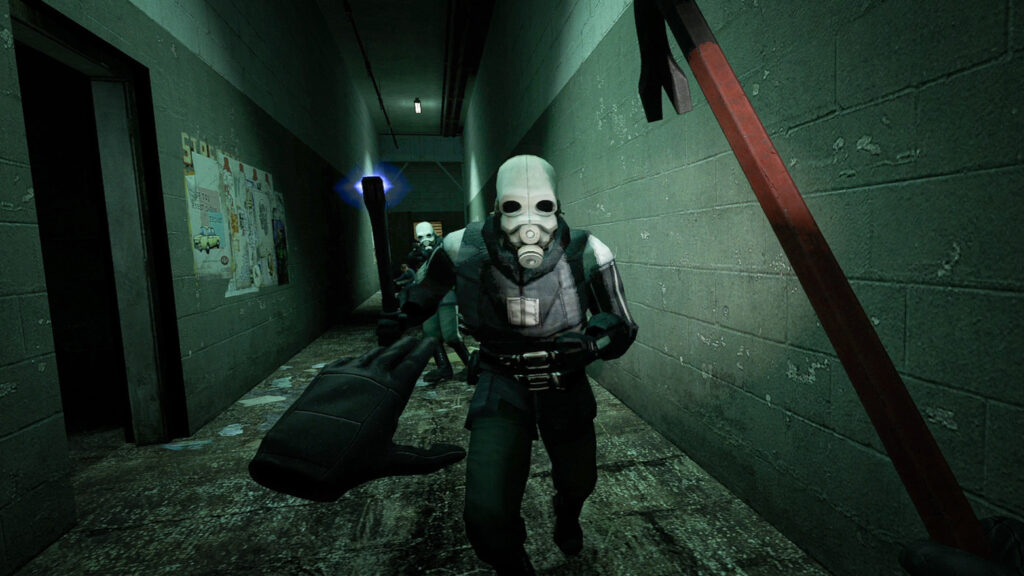
In this captivating video game, players find themselves thrust into a dystopian world firmly gripped by the iron fist of a totalitarian regime, where every aspect of society is under the watchful eye and control of an oppressive alien force.
The narrative unfolds against a backdrop of societal decay and fear, as the alien regime enforces its rule with relentless authority, extinguishing any flicker of individuality or dissent.
Players must navigate the treacherous landscape, where the very air seems to carry the weight of oppression, and every step taken could lead to consequences both dire and far-reaching.
At its core, the game is a compelling exploration of resistance, as players assume the role of individuals fighting against the dehumanizing forces of authoritarianism.
The narrative weaves a tale of hope amidst despair, emphasizing the indomitable human spirit’s capacity to resist and yearn for freedom even in the face of overwhelming odds.
Themes of resistance, sacrifice, and the quest for liberty resonate throughout the gameplay, prompting players to confront the ethical dilemmas of rebellion and the pursuit of a brighter future.
Through its immersive storytelling, the game serves as a mirror reflecting the enduring struggle between oppressive forces and the innate human desire for autonomy and self-determination.
Fallout Series (1997 – present)

The Fallout series transports players into a desolate and irradiated landscape, painting a vivid picture of a post-apocalyptic America scarred by the aftermath of a devastating nuclear war.
In this grim and unforgiving world, remnants of civilization cling to survival amidst the pervasive radiation, mutated creatures, and the relentless struggle for power.
The games craft a narrative that captures the essence of human resilience in the face of catastrophe, where survivors navigate the decaying remnants of once-thriving cities and barren wastelands, each corner fraught with danger and uncertainty.
What distinguishes the Fallout series is its commitment to player agency and moral decision-making.
Players are confronted with choices that extend beyond the immediate threats of mutated monsters or rival factions vying for dominance.
The games force players to grapple with the ethical consequences of their decisions, emphasizing the blurred lines between right and wrong in a world where survival often hinges on compromise.
Whether deciding the fate of a struggling community, choosing allegiances in a power struggle, or determining the use of advanced technology, players navigate a moral landscape where every action ripples through the harsh fabric of the post-apocalyptic society.
The Fallout games stand as a testament to the intricacies of human nature in extreme circumstances, challenging players to confront the ethical complexities inherent in a world struggling to rebuild itself amidst the ruins of nuclear devastation.
Metro Series (2005 – present)
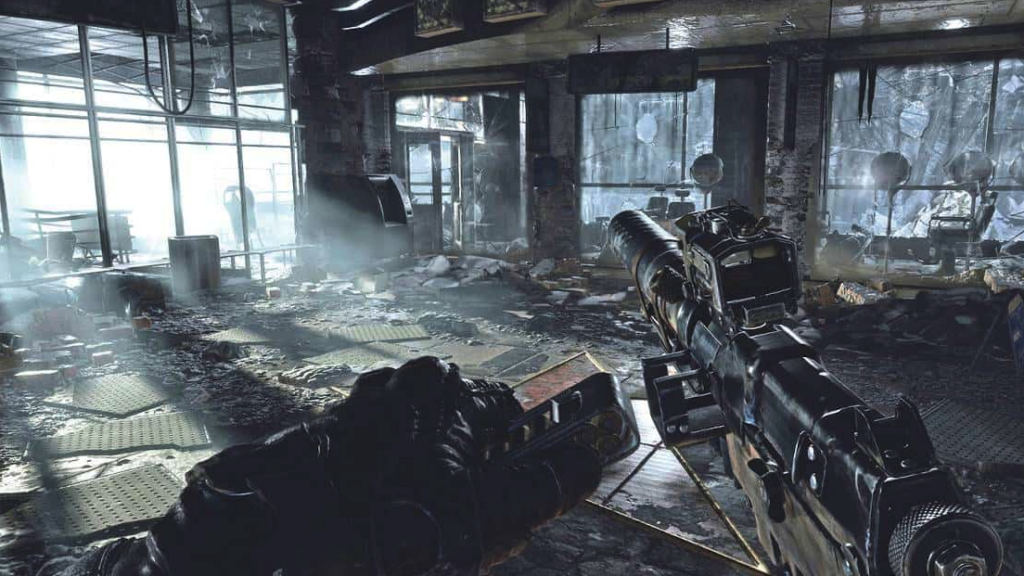
Adapted from Dmitry Glukhovsky’s novels, the Metro video games immerse players in a harrowing post-apocalyptic narrative set within the confines of the Moscow metro system.
Following a nuclear apocalypse that has rendered the surface world uninhabitable, the survivors find refuge in the dark and labyrinthine tunnels of the metro, where every station becomes a microcosm of the struggles and complexities of human survival.
The games masterfully depict the psychological toll of living in perpetual darkness, where the ever-present threat of mutated creatures and scarce resources adds an extra layer of tension to an already claustrophobic environment.
The Metro series delves into profound themes of survival, morality, and the intricacies of the human condition under extreme circumstances.
As players navigate this perilous underground world, they grapple with moral choices that resonate far beyond the confines of the metro tunnels.
The scarcity of resources prompts players to make decisions that challenge their understanding of right and wrong, exploring the depths to which individuals are willing to go in the pursuit of survival.
The games serve as a poignant reflection on the fragility of societal norms in the face of existential threats, painting a vivid and often haunting portrayal of the human spirit’s resilience and adaptability in the darkest corners of a post-apocalyptic world.
Iconic Dystopian TV Shows
Dystopian television shows have captivated audiences by painting vivid and often unsettling pictures of imagined futures marked by societal collapse, oppressive regimes, and the fight for survival.
Black Mirror (2011 – 2019)
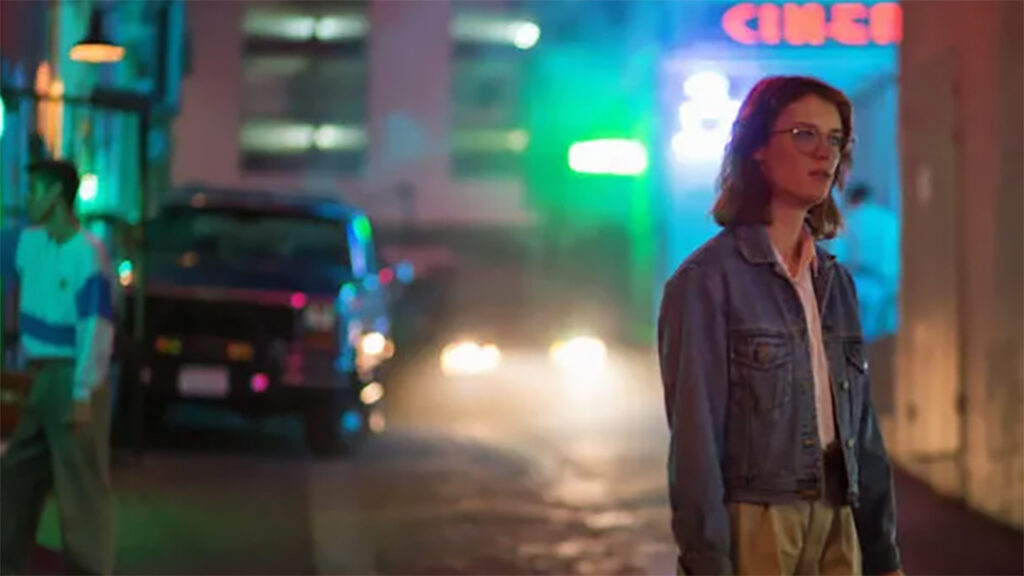
Charlie Brooker’s Black Mirror stands as a thought-provoking anthology series that casts a critical and often chilling gaze at the intersection of modern society and technology.
With each standalone episode, the show unveils a distinct dystopian vision, offering viewers a mirror reflecting the potential dark consequences of our increasingly interconnected and technologically dependent world.
Brooker’s storytelling prowess weaves narratives that are not just cautionary tales but stark examinations of the unintended consequences stemming from our relationship with advanced technology.
The episodes of Black Mirror delve into a diverse array of themes, unearthing the unsettling aspects of contemporary life.
From the perils of social media obsession to the invasive consequences of surveillance, and the ethical dilemmas brought forth by rapid technological advancements, the series unflinchingly confronts viewers with the potential downsides of the digital age.
It prompts reflection on the impact of our reliance on devices, challenging preconceived notions about progress and innovation.
Black Mirror succeeds not only as a dystopian exploration of technology’s dark underbelly but also as a mirror that forces audiences to contemplate the moral and societal implications of the digital era in which we live.
Westworld (2016 – 2022)
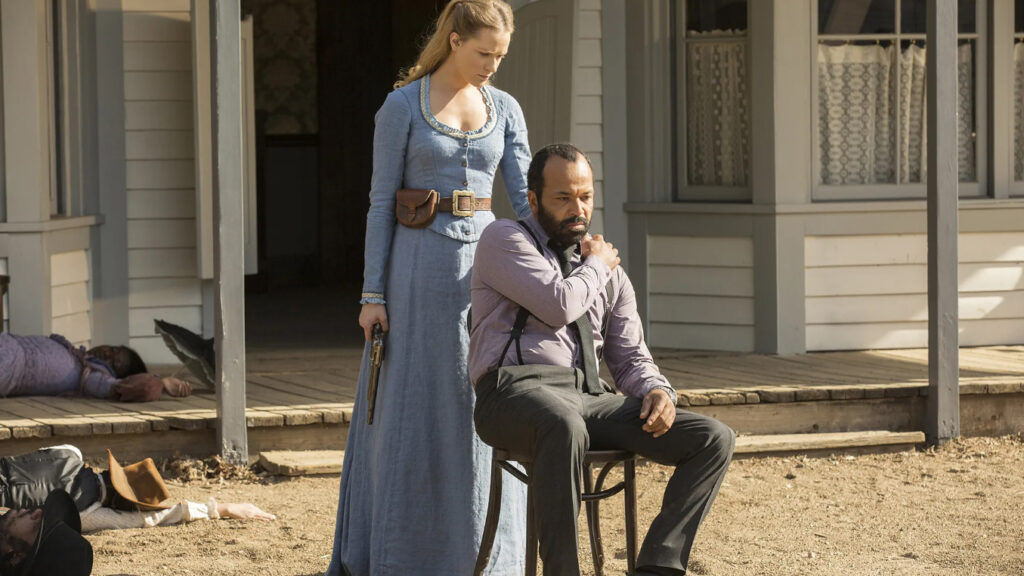
Westworld is a captivating exploration of the convergence between human desires and advanced artificial intelligence set against the backdrop of a futuristic Wild West-themed amusement park.
In this visually stunning and conceptually rich show, the park is populated by android hosts designed to fulfill the desires and fantasies of the human guests.
As visitors engage in morally ambiguous and often violent interactions with the hosts, the narrative delves into profound themes of AI consciousness, free will, and the intricate ethical implications of creating beings that mimic human emotions and behaviors.
Westworld intricately weaves a tapestry of narratives that blur the lines between man and machine, prompting viewers to question the nature of consciousness and the morality of exploiting AI entities for human pleasure.
The hosts, initially bound by their programming, gradually gain self-awareness, challenging the very foundation of their existence and their relationship with their creators.
The series becomes a philosophical exploration of the consequences of playing god with technology, forcing audiences to confront the moral quandaries that arise when human desires are indulged at the expense of artificial beings designed to serve those desires.
Westworld stands as a compelling and thought-provoking examination of the potential ethical pitfalls that accompany the blurring boundaries between humanity and technology in a not-so-distant future.
The Walking Dead (2010 – 2022)
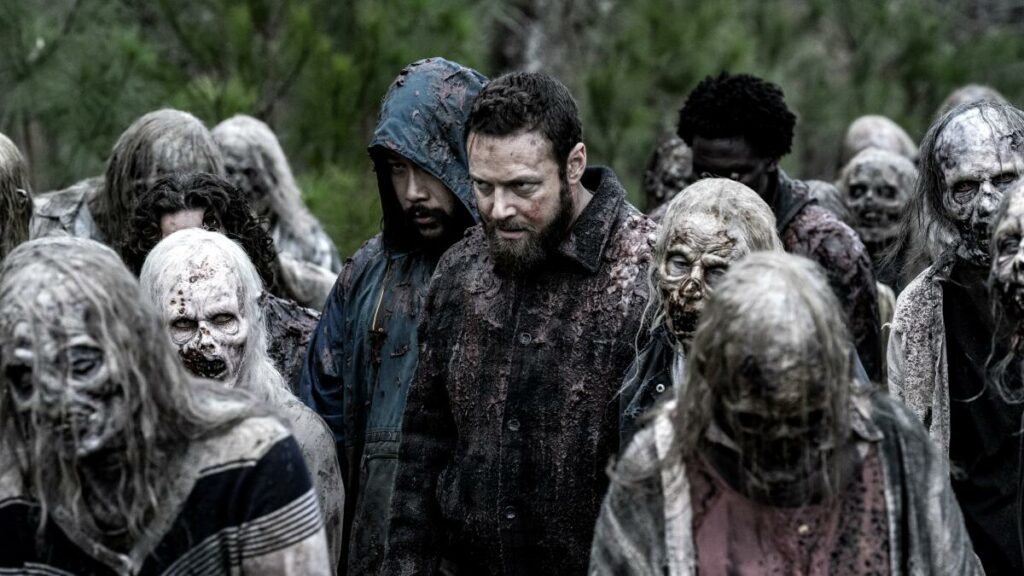
In the grim and desolate landscape of a post-apocalyptic world overrun by zombies, The Walking Dead sets the stage for an intense exploration of the human spirit and its capacity to endure against insurmountable odds.
The survivors, thrust into this lawless and perilous environment, become central figures in a narrative that unfolds as a visceral study of survival. The constant threat of the undead looms large, transforming every step the group takes into a life-or-death decision.
The show masterfully captures the relentless tension and uncertainty that accompany the struggle for survival in a world where the line between life and death is perilously thin.
Beyond the immediate threat of zombies, the series delves into profound themes, including the intricacies of human nature and the moral complexities inherent in rebuilding society amid the ruins.
As the survivors navigate through the remnants of civilization, the narrative unfurls as a compelling examination of the human condition under extreme duress.
It prompts viewers to reflect on the choices individuals make in the face of existential threats, the bonds that form in adversity, and the ethical dilemmas that arise when grappling with the fundamental question of what it means to be human in a world dominated by the undead.
The show serves as a metaphorical mirror, reflecting the fragility of societal norms and the indomitable resilience of the human spirit in the face of an apocalyptic reckoning.
The 100 (2014 – 2020)

In this gripping series, a cohort of young survivors emerges as protagonists, undertaking a perilous journey back to Earth after a devastating nuclear apocalypse.
As they navigate the hazardous aftermath of the cataclysmic event, the narrative becomes an enthralling exploration of the challenges and conflicts that arise in a world torn apart by warring factions.
The survivors find themselves entangled in a complex web of power struggles, moral quandaries, and the relentless pursuit of resources in a landscape scarred by the remnants of civilization.
At its core, The 100 delves into profound themes of leadership, morality, and the indomitable human struggle for survival and cooperation.
The young protagonists, thrust into positions of authority, must grapple with the weighty responsibilities of guiding their group through the unforgiving terrain of a post-apocalyptic world.
The narrative unfolds as a nuanced examination of the ethical decisions required for the group’s survival, often blurring the lines between right and wrong in the pursuit of a better future.
As the characters confront the harsh realities of their new world, viewers are invited to contemplate the complexities of human nature in times of crisis, where leadership becomes a crucible for moral choices and the collective effort to endure in the face of overwhelming adversity.
Altered Carbon (2018 – 2020)

In this thought-provoking series set in a futuristic landscape where consciousness can seamlessly transfer between bodies, the very essence of identity and mortality becomes a malleable concept.
The narrative weaves an intricate exploration of themes such as identity, immortality, and the far-reaching consequences of advanced technology.
The ability to shift one’s consciousness between bodies fundamentally alters the traditional notions of selfhood, prompting characters and viewers alike to question the very fabric of human identity.
Within this futuristic society, stark divisions emerge based on wealth, accentuating the show’s commentary on the ethical dilemmas spawned by a world where death is no longer a permanent fixture.
The exploration of this societal schism becomes a lens through which the series critiques the potential exploitation of advanced technology by the privileged few, leaving the rest in a state of vulnerability.
The consequences of achieving a form of immortality are laid bare as the show navigates the moral complexities that arise when individuals wield the power to extend their lives indefinitely, raising questions about the equitable distribution of life-altering technologies and the resulting disparities in society.
As characters grapple with the ramifications of their newfound immortality and the societal divisions it accentuates, the series becomes a speculative and introspective exploration of the human condition in the face of evolving technology.
Altered Carbon invites viewers to contemplate the profound implications of tampering with the very nature of life and death, challenging them to reflect on the ethical responsibilities that accompany the relentless march of scientific progress in a world where the boundaries between life, identity, and morality blur into uncharted territories.
The Man in the High Castle (2015 – 2019)
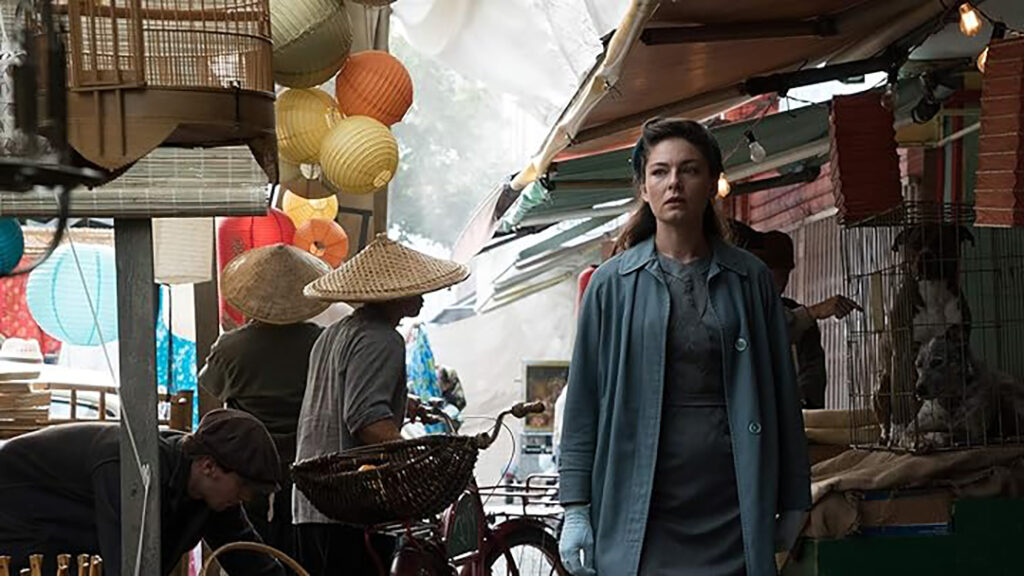
The Man in the High Castle is an exploration of an alternate history shaped by the chilling prospect of the Axis Powers emerging victorious in World War II.
Adapted from Philip K. Dick’s novel, the narrative unfolds against the backdrop of a dystopian America, now divided between Nazi-controlled territories in the East and Japanese-controlled territories in the West.
This chilling alternate reality becomes a rich tapestry for the exploration of themes such as resistance, authoritarianism, and the relentless struggle for freedom in a world marred by the enduring shadows of tyranny.
The show meticulously crafts a society suffocated by the authoritarian rule of the Axis Powers, offering viewers a visceral glimpse into the oppressive realities faced by its inhabitants.
The narrative follows characters enmeshed in the intricate web of resistance movements, grappling with the moral complexities of opposing an overwhelmingly powerful regime.
As the characters navigate the razor-thin line between survival and resistance, The Man in the High Castle becomes a riveting commentary on the enduring human spirit’s capacity to resist oppression, even in the face of seemingly insurmountable odds.
Through its portrayal of an alternate America under the sway of Nazi and Japanese control, the series serves as a poignant reminder of the fragility of democratic ideals and the potential consequences of historical turning points.
It prompts viewers to reflect on the themes of resilience, sacrifice, and the eternal quest for freedom in the face of oppressive regimes, drawing parallels to real-world struggles for liberty and justice.
Exploring Iconic Dystopian Graphic Novels
Dystopian comic books stand as compelling chronicles that explore the darkest recesses of speculative futures and the human condition.
From the shadowy streets of noir-inspired metropolises to the sprawling landscapes of post-apocalyptic realms, these graphic narratives provide a lens through which creators dissect societal anxieties, political uncertainties, and the consequences of unchecked power.
V for Vendetta (1982-1985)
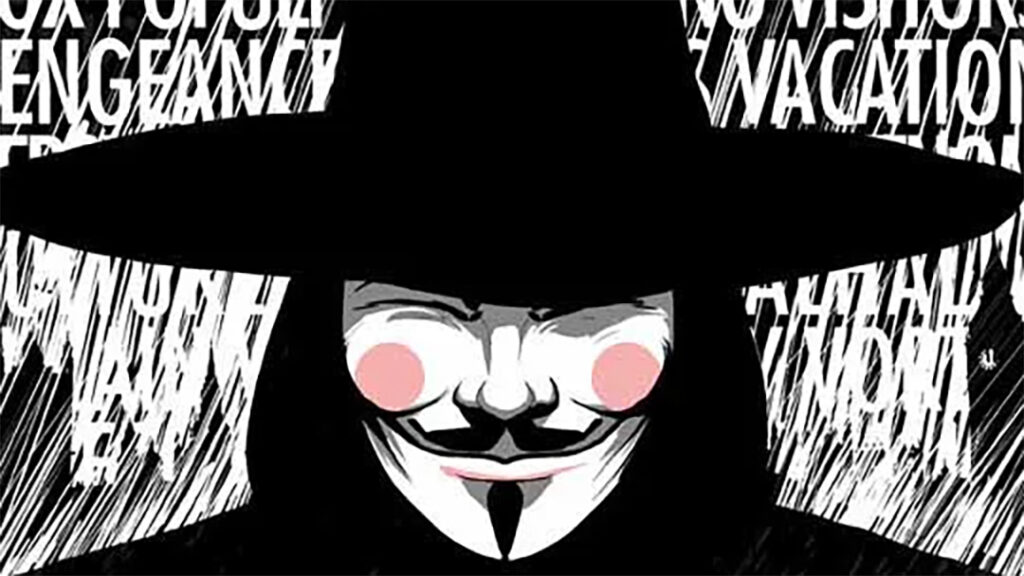
V for Vendetta, penned by the visionary Alan Moore and illustrated by David Lloyd, stands as a compelling example of a dystopian masterpiece.
Set against a backdrop of political oppression, surveillance, and totalitarian rule, this graphic novel explores the consequences of unchecked power and the indomitable spirit of resistance.
V for Vendetta unfolds in a dystopian Britain under the iron-fisted rule of Norsefire, a fascist regime that has risen to power after a devastating nuclear war.
The narrative navigates the grim aftermath of this catastrophe, depicting a society oppressed by a government that controls every facet of life.
The bleak and desolate London, haunted by the shadows of its authoritarian rulers, becomes a powerful symbol of the dystopian landscape that serves as the canvas for Moore and Lloyd’s tale.
At the heart of V for Vendetta is the enigmatic protagonist known only as “V.”
Clad in a Guy Fawkes mask, V emerges as a symbol of resistance against the oppressive regime.
The mask, with its iconic grin and mustache, transforms V into an emblem of defiance and anonymity.
This choice is not only a nod to historical rebellion but also a testament to the power of symbols in challenging authority.
V’s mask becomes a rallying point for the citizens of this dystopian world, inspiring them to question the status quo and stand against tyranny.
The narrative doesn’t shy away from tackling political and societal issues that resonate far beyond the pages of the graphic novel. V for Vendetta critically examines the consequences of blind obedience, the manipulation of fear, and the erosion of civil liberties in the pursuit of control.
The narrative offers a stark warning about the dangers of complacency in the face of political extremism and the erosion of individual freedoms.
As the story unfolds, we witness the transformative journey of Evey Hammond, an ordinary citizen swept up in V’s campaign against the oppressive regime.
Evey’s evolution from victim to ally encapsulates the resilience of the human spirit and the potential for change, even in the darkest of times.
Through Evey’s experiences, V for Vendetta underscores the importance of individual agency in the fight against a dystopian reality.
What sets V for Vendetta apart is its exploration of philosophical and ideological themes.
Moore’s narrative delves into the complexities of morality, the consequences of radicalism, and the blurred lines between heroism and terrorism.
The graphic novel challenges readers to question their own beliefs and confront the uncomfortable truths that accompany the pursuit of justice in the face of authoritarianism.
Akira (1982-1990)
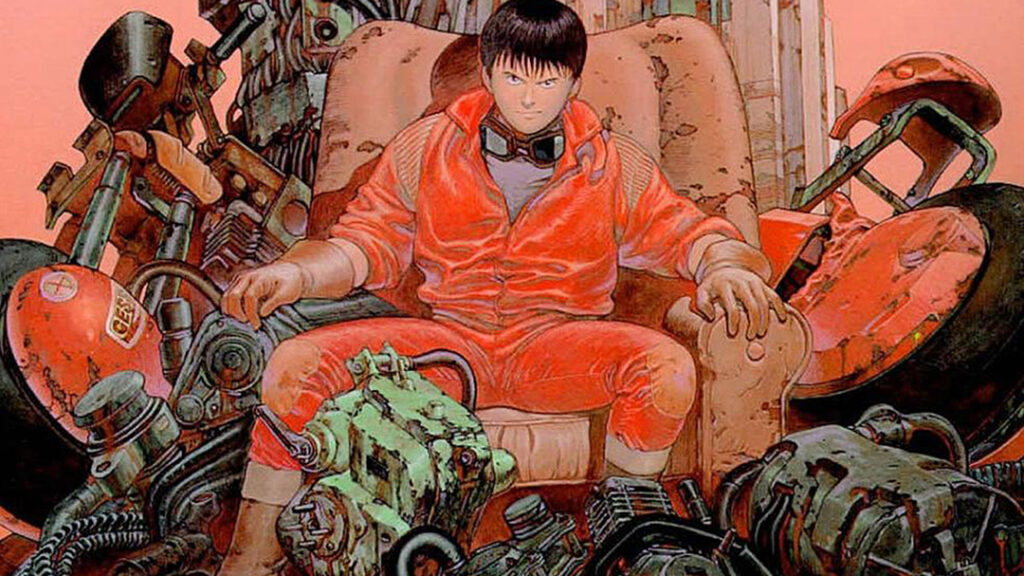
Akira, the work of Japanese manga artist Katsuhiro Otomo, stands as a towering example of a dystopian comic book that has left its mark on the genre.
Akira is a cyberpunk epic that unfolds in a post-apocalyptic Tokyo, offering a relentless exploration of societal collapse, government experimentation, and the consequences of unchecked power.
Set against the haunting backdrop of a city ravaged by World War III and now facing the perils of reconstruction, Akira presents a dystopian metropolis teetering on the brink of chaos.
The remnants of Tokyo, known as Neo-Tokyo, are a microcosm of societal decay and political corruption, echoing the anxieties of the era in which it was created.
The stark visuals and meticulous world-building contribute to the immersive experience, drawing readers into a nightmarish future where order is maintained through militarization, surveillance, and a veneer of societal control.
The narrative of Akira unfolds with the discovery of psychic powers that emerge from government experiments gone awry, leading to the reawakening of Akira, a powerful psychic with cataclysmic potential.
The story delves into the ramifications of these supernatural abilities, illustrating the fine line between progress and peril. Otomo’s storytelling prowess lies not only in the breathtaking action sequences and visceral artwork but also in his ability to unravel complex political and existential themes.
As the characters grapple with their newfound powers and the unraveling chaos of Neo-Tokyo, Akira becomes a meditation on the consequences of human ambition and the perpetual cycle of destruction and reconstruction.
Themes of corruption, political intrigue, and the toll of scientific experimentation resonate with a palpable intensity, mirroring the societal fears and uncertainties prevalent during the time of its creation.
The visual impact of Akira is equally potent.
Otomo’s detailed and kinetic art style captures the frenetic energy of a city in turmoil, reflecting the tumultuous narrative.
The cyberpunk aesthetics, characterized by neon-soaked cityscapes, futuristic technology, and a sense of urban decay, have become iconic within the genre, influencing a myriad of subsequent works in comics, animation, and film.
Akira transcends cultural boundaries, offering a riveting narrative that remains as relevant today as it did upon its initial publication.
Otomo’s magnum opus continues to be celebrated for its thematic depth, artistic innovation, and its prescient examination of the societal and existential challenges that accompany the relentless march of progress in a dystopian world.
Watchmen (1986-1987)

Watchmen is a groundbreaking graphic novel created by writer Alan Moore and artist Dave Gibbons.
Released as a limited series in 1986-1987, Watchmen diverges from conventional superhero narratives, subverting the genre to offer a complex, morally ambiguous exploration of power, humanity, and societal decay.
Set in an alternate version of the United States during the Cold War era, Watchmen unfolds in a world where masked vigilantes were once embraced but have since fallen out of favor, leading to their disbandment.
As the narrative unfolds against the backdrop of an impending nuclear conflict, the existence of superhumans becomes a source of societal tension and governmental unease.
The gritty and atmospheric depiction of a world on the brink of chaos is a hallmark of the dystopian setting within Watchmen.
The graphic novel’s narrative intricacy is complemented by its ensemble cast of complex characters, each grappling with personal demons and moral quandaries.
Driven by a sense of realism and psychological depth, the characters, including Rorschach, Doctor Manhattan, and Ozymandias, mirror the complexities of the dystopian world they inhabit.
Moore’s deconstruction of superhero tropes confronts readers with the ethical ambiguities inherent in wielding power, even with the best of intentions.
The visual storytelling in Watchmen further cements its status as a dystopian masterpiece.
Gibbons’ meticulous artwork and panel layouts contribute to the narrative’s atmospheric intensity.
The juxtaposition of grim urban landscapes, cold war paranoia, and the disintegration of societal norms creates a visual language that resonates with the disquieting essence of dystopia.
At its core, Watchmen challenges the traditional dichotomies of hero and villain, right and wrong, in a dystopian society sliding into chaos.
The narrative explores themes of power, morality, and the consequences of unchecked authority, offering a reflection on the fragility of societal order in the face of impending doom.
The haunting smiley-face badge, marked by a splatter of blood, becomes an iconic symbol encapsulating the graphic novel’s exploration of the blurred lines between heroism and moral compromise.
Y: The Last Man (2002-2008)
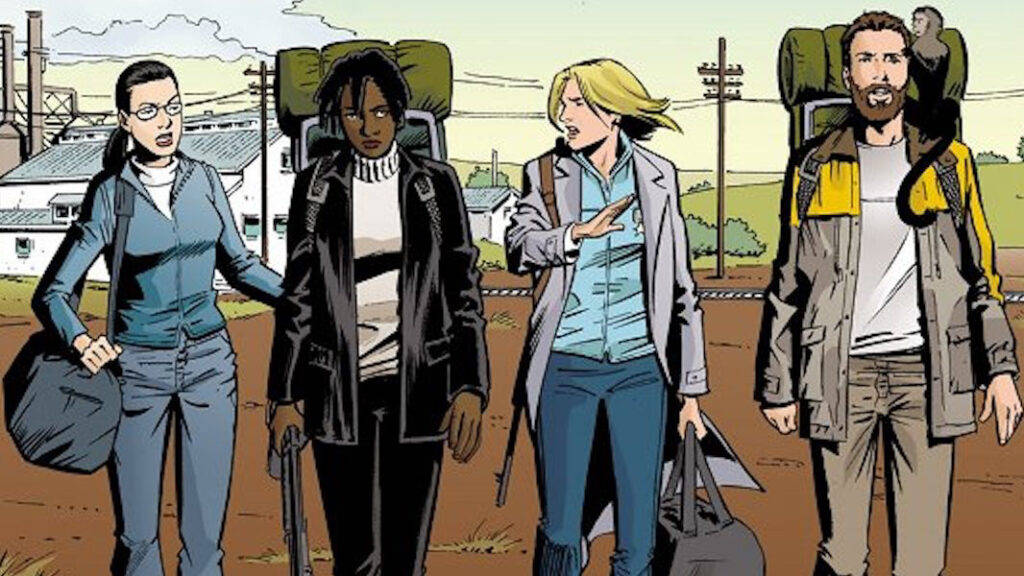
Y: The Last Man, is a compelling comic book series created by writer Brian K. Vaughan and artist Pia Guerra.
Set against the backdrop of a world plunged into chaos, the series explores the consequences of a mysterious event that simultaneously wipes out every mammal with a Y chromosome, except for one man and his pet monkey.
In this gender apocalypse, Yorick Brown becomes the last surviving human with a Y chromosome, thrust into a world that has irrevocably changed.
One of the strengths of Y: The Last Man lies in its meticulous world-building, offering readers a comprehensive and realistic portrayal of a society grappling with the sudden loss of half its population.
As the male-centric structures of power crumble, the series delves into the complexities of a world redefined by the absence of men, examining the social, political, and personal ramifications of such an event.
The narrative becomes a thought-provoking exploration of gender dynamics, societal restructuring, and the resilience of human nature in the face of cataclysmic change.
The character development in Y: The Last Man is another standout aspect. Yorick Brown’s journey from a seemingly ordinary escape artist to a symbol of hope and survival is both compelling and relatable.
The supporting cast, including the intelligent and resourceful Agent 355 and the geneticist Dr. Allison Mann, adds layers to the narrative, providing diverse perspectives on the unraveling dystopia.
Vaughan’s writing skillfully balances action, humor, and emotional depth, creating a narrative that resonates on multiple levels.
Pia Guerra’s artwork complements the narrative impeccably, capturing the emotional weight of the characters and the gravity of the situations they face.
The visual representation of a world in flux, marked by both the remnants of the old order and the emergence of new, evokes a sense of desolation and uncertainty, essential elements of any dystopian setting.
Y: The Last Man succeeds not only as a gripping dystopian tale but also as a commentary on identity, gender, and societal structures.
It confronts readers with profound questions about the nature of humanity, power dynamics, and the adaptability of societies in the face of unprecedented challenges.
DMZ (2005-2012)
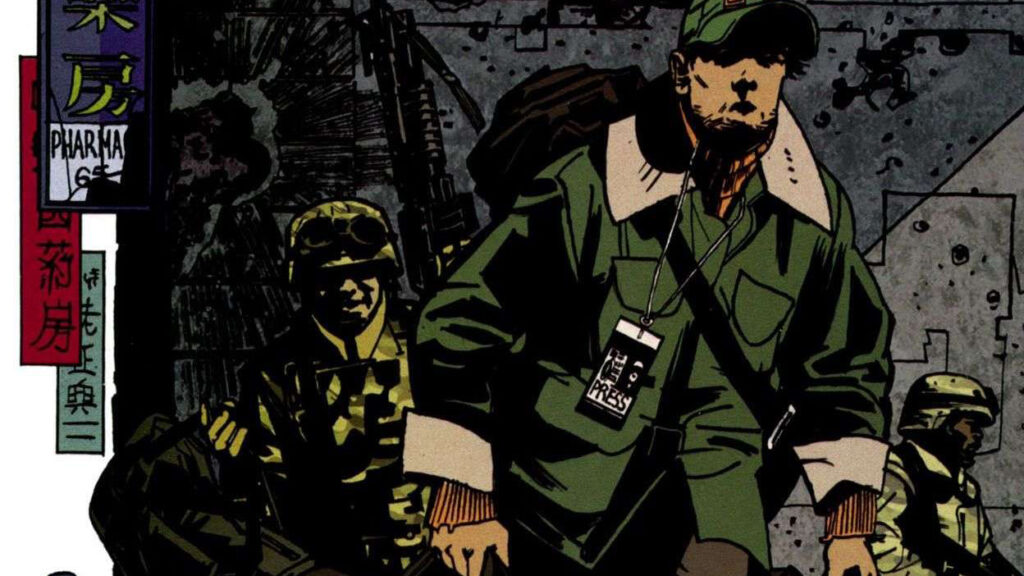
DMZ, the graphic novel series created by writer Brian Wood and artist Riccardo Burchielli, stands as a must-read in the realm of dystopian graphic novels, offering a stark and gripping portrayal of a fractured America in the midst of a second civil war.
The series is a visceral exploration of the consequences of political division, power struggles, and the impact of conflict on both individuals and society as a whole.
Set in a near-future America torn apart by a devastating civil war, DMZ takes readers to the heart of the conflict, the demilitarized zone (DMZ) that is Manhattan.
The island has become a battleground between the Free States of America and the United States government.
Embedded photojournalist Matty Roth becomes our eyes and ears, providing a firsthand account of the chaos and complexities that unfold within the DMZ.
What makes DMZ a must-read is its unflinching portrayal of the human cost of war and political upheaval.
Wood’s narrative skillfully weaves together personal stories with larger political and social themes, creating a narrative tapestry that is both deeply affecting and intellectually stimulating.
The characters in “DMZ” are not just archetypes but individuals with nuanced motivations, offering readers a chance to empathize with the various perspectives and struggles within the conflict.
Burchielli’s art adds a gritty and realistic visual dimension to the series, capturing the raw intensity of the urban warzone that Manhattan has become.
The graphic novel’s visual language enhances the narrative’s emotional impact, making the reader feel the weight of each choice and consequence in this dystopian world.
Moreover, DMZ is a compelling commentary on the role of media, journalism, and the manipulation of information during times of crisis.
As a journalist navigating the chaos of war, Matty Roth becomes a lens through which readers witness the power struggles, propaganda, and moral ambiguity that define the DMZ.
The series prompts reflection on the role of journalism in shaping public perception and the ethical dilemmas faced by those documenting conflict.
Transmetropolitan (1997-2002)
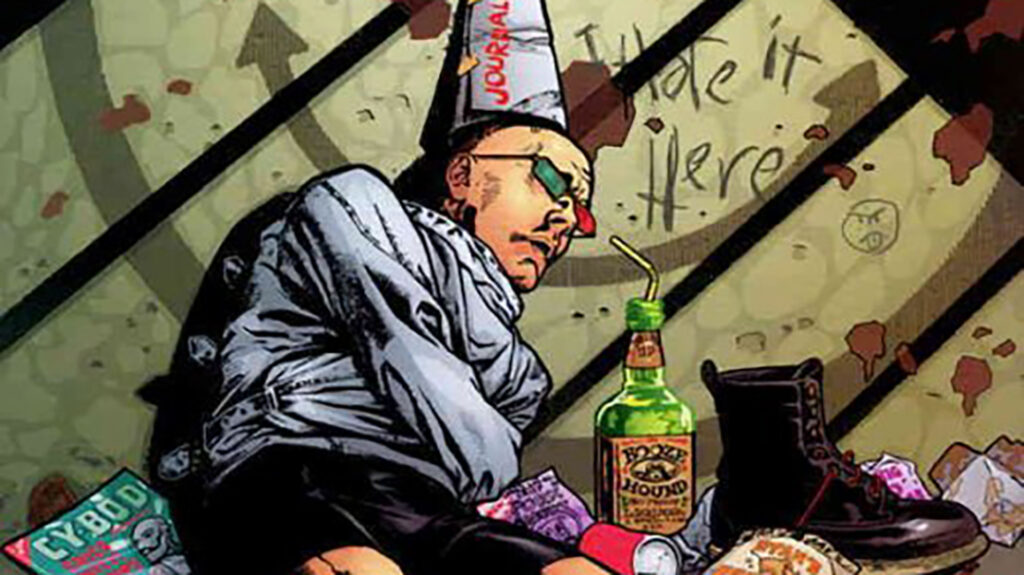
Transmetropolitan, the visionary comic book series created by writer Warren Ellis and artist Darick Robertson, emerges as an exemplary example of dystopian fiction that masterfully combines biting satire, futuristic aesthetics, and a relentless exploration of societal decay.
Set in a sprawling, chaotic metropolis known as The City, Transmetropolitan introduces readers to the cantankerous and unapologetically eccentric journalist Spider Jerusalem.
What sets Transmetropolitan apart is its unapologetic and satirical take on the excesses of contemporary society extrapolated into a future where technology, politics, and media have spiraled into frenetic extremes.
The series captures the essence of a dystopian world marked by moral decay, political corruption, and the dehumanizing influence of unchecked technological progress.
Ellis’s storytelling paints a vivid picture of a society grappling with the consequences of its own excesses, mirroring the anxieties and absurdities of the real world.
The character of Spider Jerusalem serves as the perfect conduit for the exploration of this dystopian landscape.
A rogue journalist armed with a bowel disruptor and a relentless pursuit of truth, Spider navigates the chaotic streets of The City, exposing corruption and challenging the status quo.
His character embodies the resilience and tenacity of the individual amidst the overwhelming forces of a dystopian society. Spider Jerusalem becomes a symbol of resistance, questioning authority and embracing the chaos in a world that has lost its moral compass.
Darick Robertson’s art contributes significantly to the visual impact of Transmetropolitan.
The frenetic pace of The City, the outlandish character designs, and the juxtaposition of futuristic elements with a decaying urban backdrop create a visually striking portrayal of the dystopian world.
Robertson’s ability to capture the absurdities of this future society enhances the satirical nature of the narrative, making Transmetropolitan a visually immersive and thematically rich experience.
Moreover, Transmetropolitan” is prescient in its social and political commentary, anticipating and reflecting on the trajectory of contemporary society.
Themes of media manipulation, political corruption, and the dehumanizing impact of technology resonate deeply in a world that constantly grapples with these issues.
The series serves as a cautionary tale, urging readers to consider the consequences of unchecked power and the erosion of civil liberties.
Through its vibrant characters, razor-sharp satire, and thought-provoking narrative, the series remains a timeless exploration of the human condition in the face of societal decay.
East of West (2013-2019)
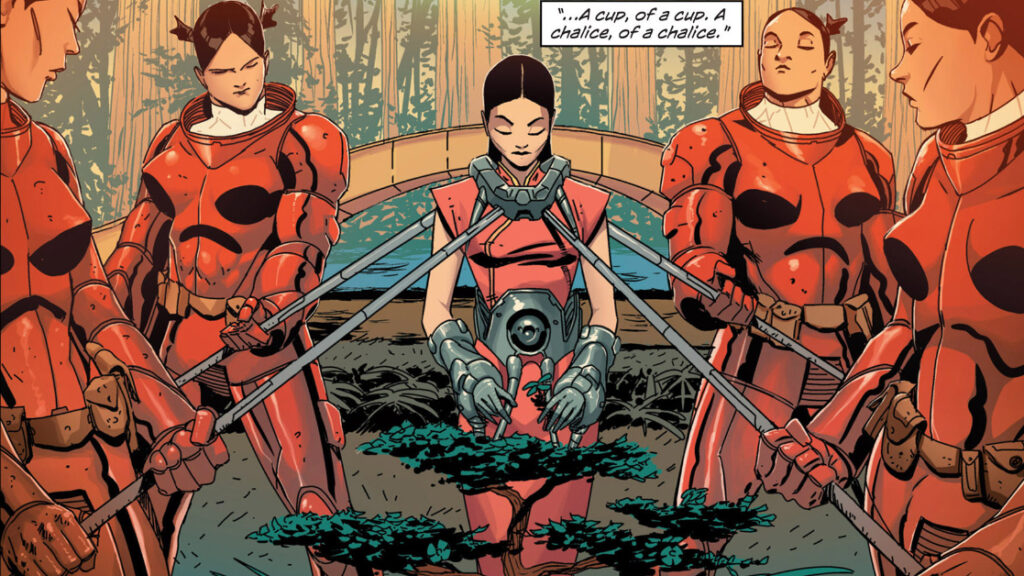
East of West is the masterful creation of writer Jonathan Hickman and artist Nick Dragotta.
Set in an alternate history of the United States, the series presents a gripping narrative that blends elements of dystopia, science fiction, and the supernatural to craft a world both intriguing and unsettling.
The premise of East of West is built upon a fractured America divided into seven nations on the brink of war, marked by political intrigue, religious fervor, and the looming specter of the apocalypse.
Against this tumultuous backdrop, the Four Horsemen of the Apocalypse are reborn, and Death, one of the Horsemen, embarks on a quest for revenge and redemption.
The series intertwines personal vendettas with grand political machinations, creating a narrative tapestry that is both epic in scope and deeply personal.
Hickman’s storytelling in East of West stands out for its complexity and world-building.
The intricate web of alliances, betrayals, and shifting power dynamics captures the essence of a dystopian world in constant flux.
The rich lore and mythology woven into the narrative add layers of depth, making the series a captivating exploration of the consequences of power, destiny, and the collision of divergent ideologies.
Nick Dragotta’s artwork is pivotal in bringing this dystopian world to life.
The visual style, characterized by dynamic action sequences, intricate character designs, and expansive landscapes, immerses readers in a world both familiar and alien.
The striking visuals contribute to the creation of a dystopia that feels both expansive and claustrophobic, underscoring the tension and unpredictability that permeate the narrative.
Moreover, East of West excels in its portrayal of morally ambiguous characters and the exploration of complex ethical dilemmas.
The series challenges traditional notions of heroism and villainy, presenting characters with conflicting motivations and shades of gray.
This narrative choice adds a layer of realism to the dystopian setting, prompting readers to question the nature of power, justice, and the choices made in the pursuit of survival.
Through its multifaceted characters, intricate world-building, and thematic richness, the series offers readers a thought-provoking exploration of societal collapse, political machinations, and the indomitable human spirit amidst the ruins of a dystopian America.
The Evolution of Dystopian Fiction: Navigating Current Realities and Technological Horizons
Dystopian fiction has long been a reflection of societal anxieties and a warning about the potential pitfalls of unchecked power, societal decay, and the erosion of fundamental human rights.
As we stand at the crossroads of a world marred by current global challenges and rapid technological advancements, the landscape of dystopian narratives is evolving.
Current Global Challenges: Shaping Tomorrow’s Dystopias
The present world is marked by a myriad of challenges – climate change, pandemics, political upheavals, and social unrest.
These issues not only mirror the themes explored in dystopian fiction but also potentially influence the direction of future narratives.
Climate disasters, resource scarcity, and health crises, evident in today’s world, might amplify in dystopian works, reflecting the consequences of inaction and neglect.
Moreover, societal divisions, erosion of civil liberties, and power struggles are ripe sources for authors and creators to draw inspiration from, envisioning dystopias fueled by today’s socio-political dynamics.
The fears of surveillance, misinformation, and the manipulation of truth, stark in the current era, might translate into more sophisticated and intricate dystopian tales.
The Influence of Technology: Crafting Tomorrow’s Nightmares
Technological advancements, especially in artificial intelligence, virtual reality, and biotechnology, pose both tremendous promise and potential peril.
Dystopian narratives often grapple with the ethical dilemmas arising from these technologies.
The fusion of surveillance, AI manipulation, and loss of personal privacy could become central themes, encapsulating the threats of our increasingly digitized lives.
Virtual realities, augmented by advanced immersive technologies, might present creators with avenues to envision hyper-realistic dystopias, blurring the lines between the virtual and the actual.
Biotechnological advances, while promising, also raise concerns about genetic manipulation, identity control, and the consequences of altering human nature – themes ripe for dystopian speculation.
The Evolving Nature of Storytelling: Formats and Audiences
The mediums through which dystopian narratives are delivered are also evolving.
Video games, once a passive form of entertainment, now offer interactive experiences where players shape the narrative and confront moral dilemmas.
Television shows explore serialized and detailed narratives, often stretching across seasons to dive deep into complex dystopian societies.
Movies, with their visual spectacle, continue to transport audiences to visually stunning yet haunting futures.
The rise of serialized storytelling, coupled with streaming services, allows for deeper world-building and character development, enhancing the immersion into dystopian realms.
The audience, too, seeks more nuanced and sophisticated narratives, demanding thought-provoking content that challenges assumptions and offers social commentary.
Navigating the Tomorrow of Dystopian Fiction
As dystopian fiction continues to evolve, it remains a poignant mirror reflecting the fears and hopes of a changing world.
The future of dystopian narratives lies in the intersection of global challenges, technological innovations, and the evolving nature of storytelling.
These narratives not only offer cautionary tales but also serve as catalysts for critical discussions on societal trajectories and ethical considerations.
The challenge for creators lies in balancing the verisimilitude of plausible dystopias with the essential elements of storytelling.
The potential of dystopian fiction to provoke reflection and inspire action in the face of global challenges and technological advancements remains a potent force, urging us to navigate the complexities of an uncertain future and to be vigilant against the shadows that lurk in our evolving world.
Ultimately, dystopian fiction remains a beacon, guiding us through the dark alleys of potential futures and beckoning us to heed its warnings and possibilities.
Conclusion
Throughout history, dystopian fiction has been a powerful tool for challenging the status quo, prompting critical examination of societal structures, and catalyzing change.
From the works of Sir Thomas More and Jonathan Swift to the thought-provoking narratives of George Orwell, Aldous Huxley, and Margaret Atwood, dystopian fiction has consistently dared us to confront uncomfortable truths about the human condition and the societies we inhabit.
It has exposed the fragility of our freedoms, the perils of unchecked power, and the consequences of environmental neglect.
But it has also illuminated the potential for resilience, the importance of ethical decision-making in the face of technological advancement, and the enduring human spirit’s capacity to overcome adversity.
In our changing world, where technological innovations advance at breakneck speed, environmental crises loom on the horizon, and social inequalities persist, dystopian fiction remains a compass guiding us through the complexities of our era.
It forces us to grapple with the consequences of our choices and to imagine the myriad possibilities that lie ahead.
Dystopian narratives resonate with our deepest anxieties, yet they also kindle the flames of hope by challenging us to rise above our shortcomings and work towards a brighter future.
Dystopian stories urge us to take proactive measures to address the challenges of our time, to confront our fears head-on, and to nurture the hopes that drive us forward.
The stories we tell in the realm of dystopian fiction are not mere cautionary tales; they are blueprints for change.
They remind us that the power to shape our destiny resides within our hands. Through the pages of dystopian literature, we discover that our fears need not paralyze us, but can mobilize us into action.
Our hopes need not remain distant dreams, but can drive us to build a better world.
In this changing world, where the only constant is change itself, dystopian fiction is a beacon of introspection, an amplifier of our voices, and a catalyst for transformation.
It calls upon us to acknowledge our fears, nurture our hopes, and actively engage in the pursuit of a future that reflects the best of our humanity.
As long as we continue to read, discuss, and learn from the timeless lessons of dystopian fiction, we remain poised to navigate the ever-shifting tides of our world, working together to shape a future that transcends our fears and fulfills our deepest hopes.
